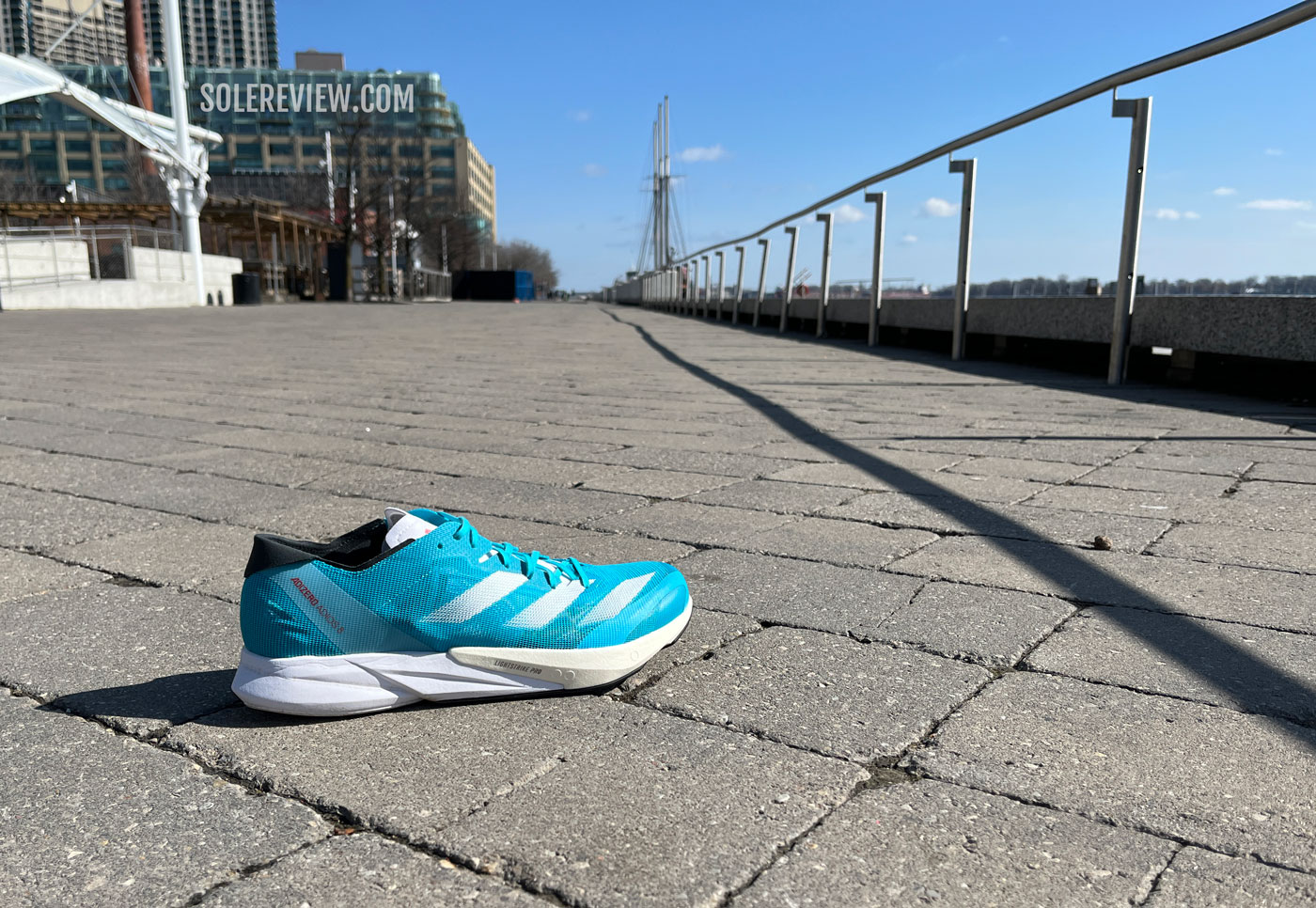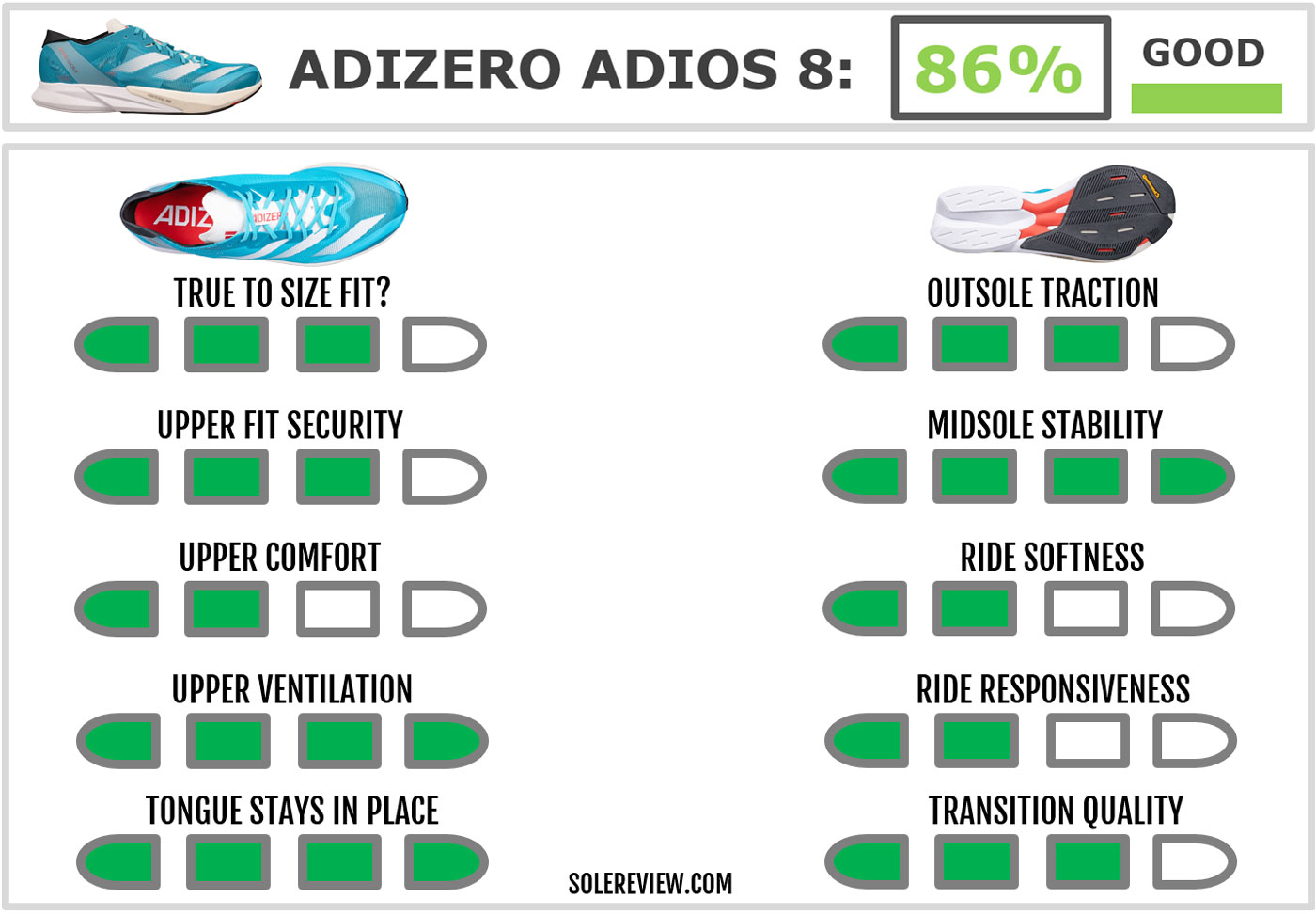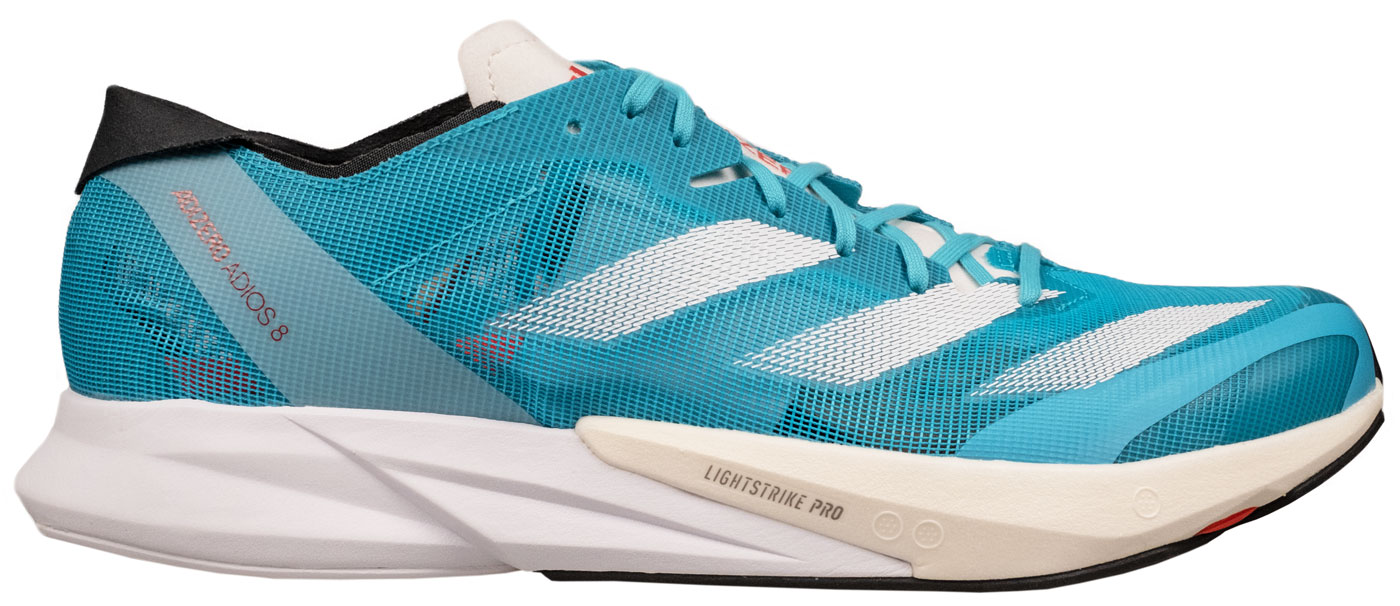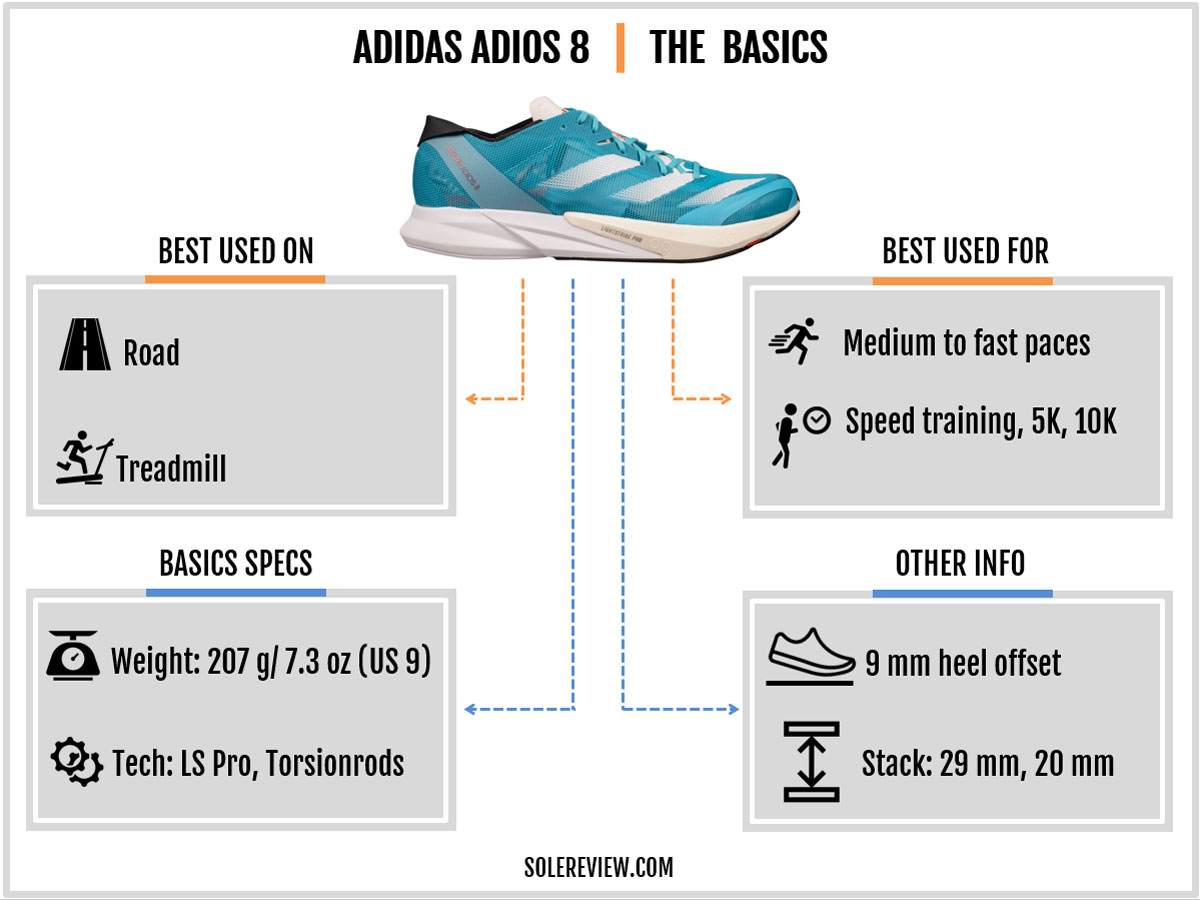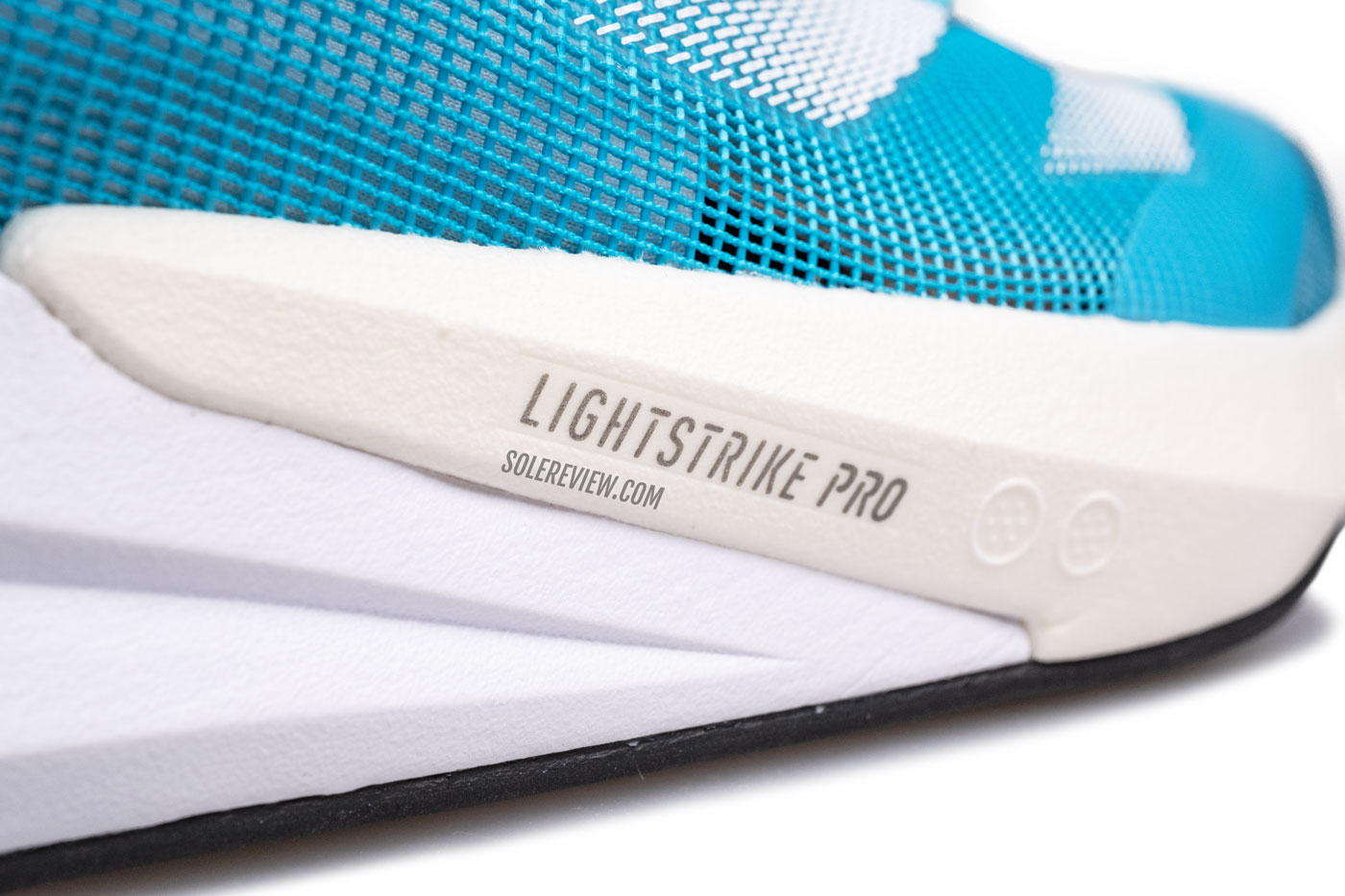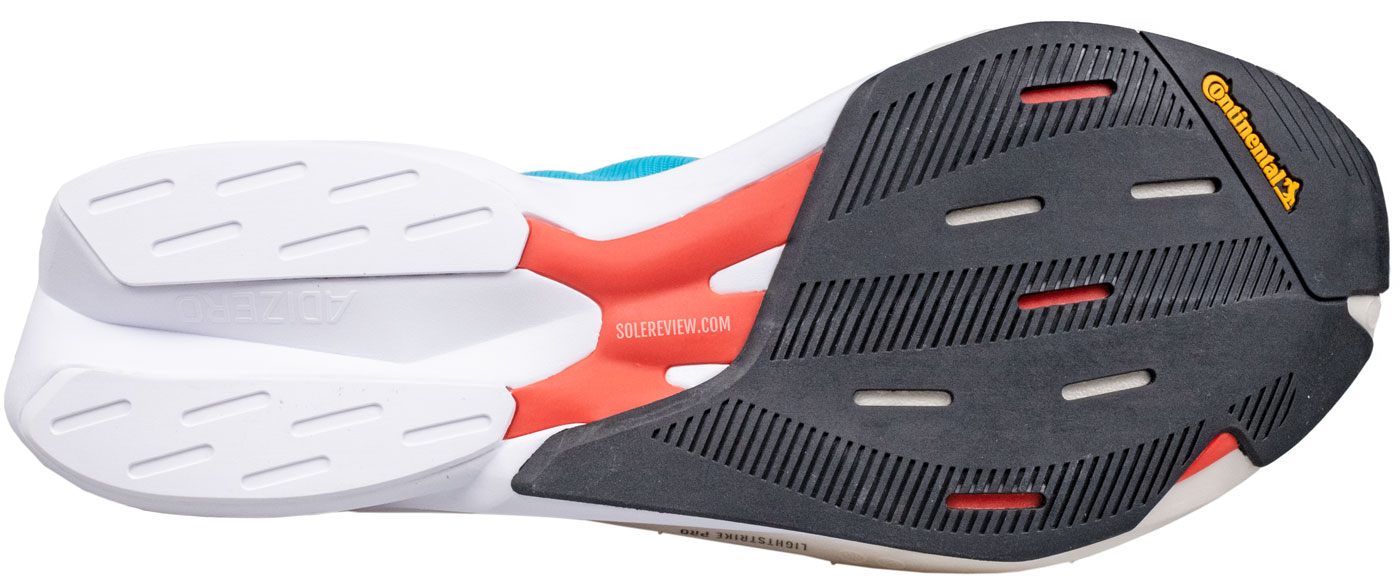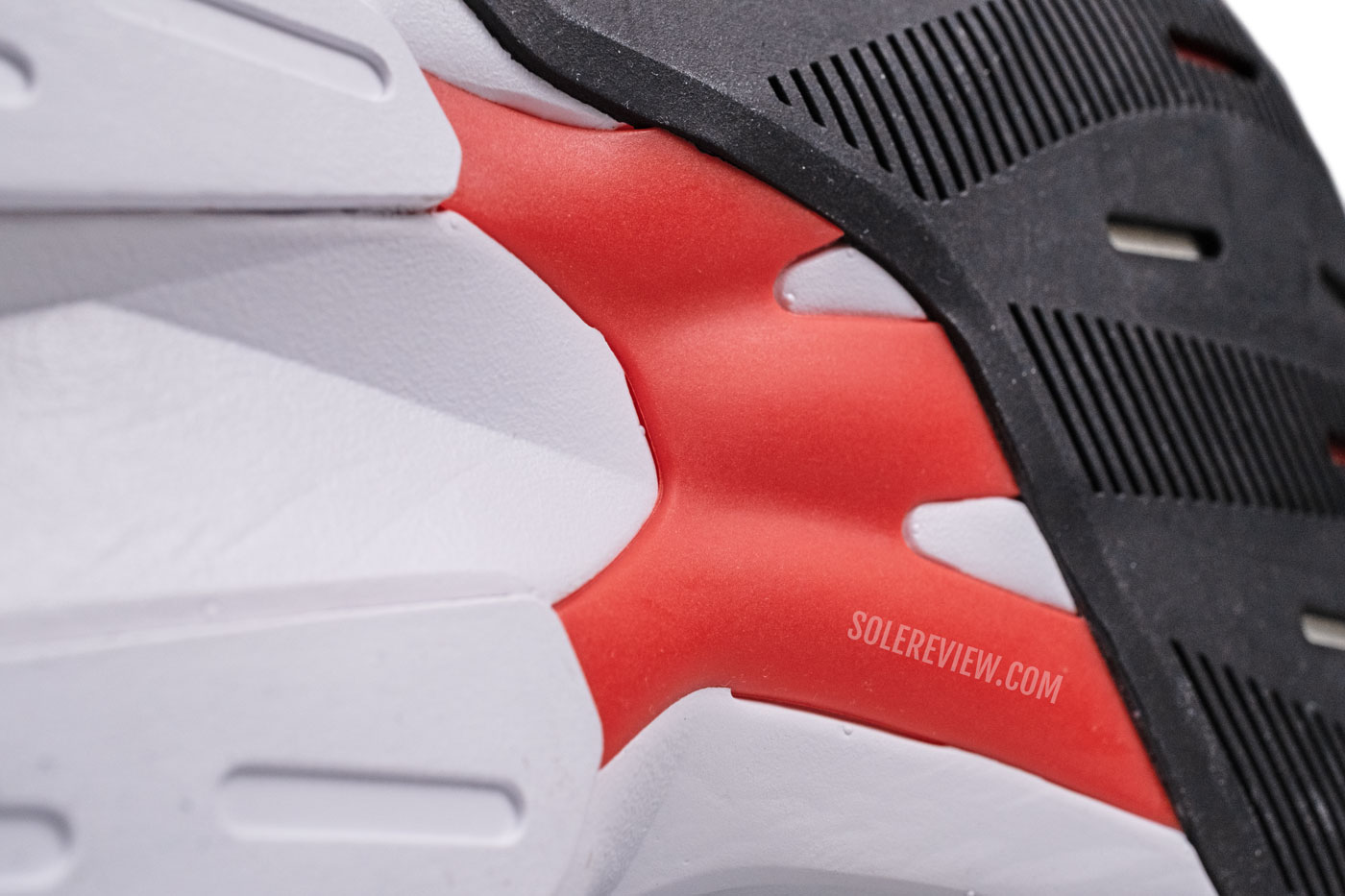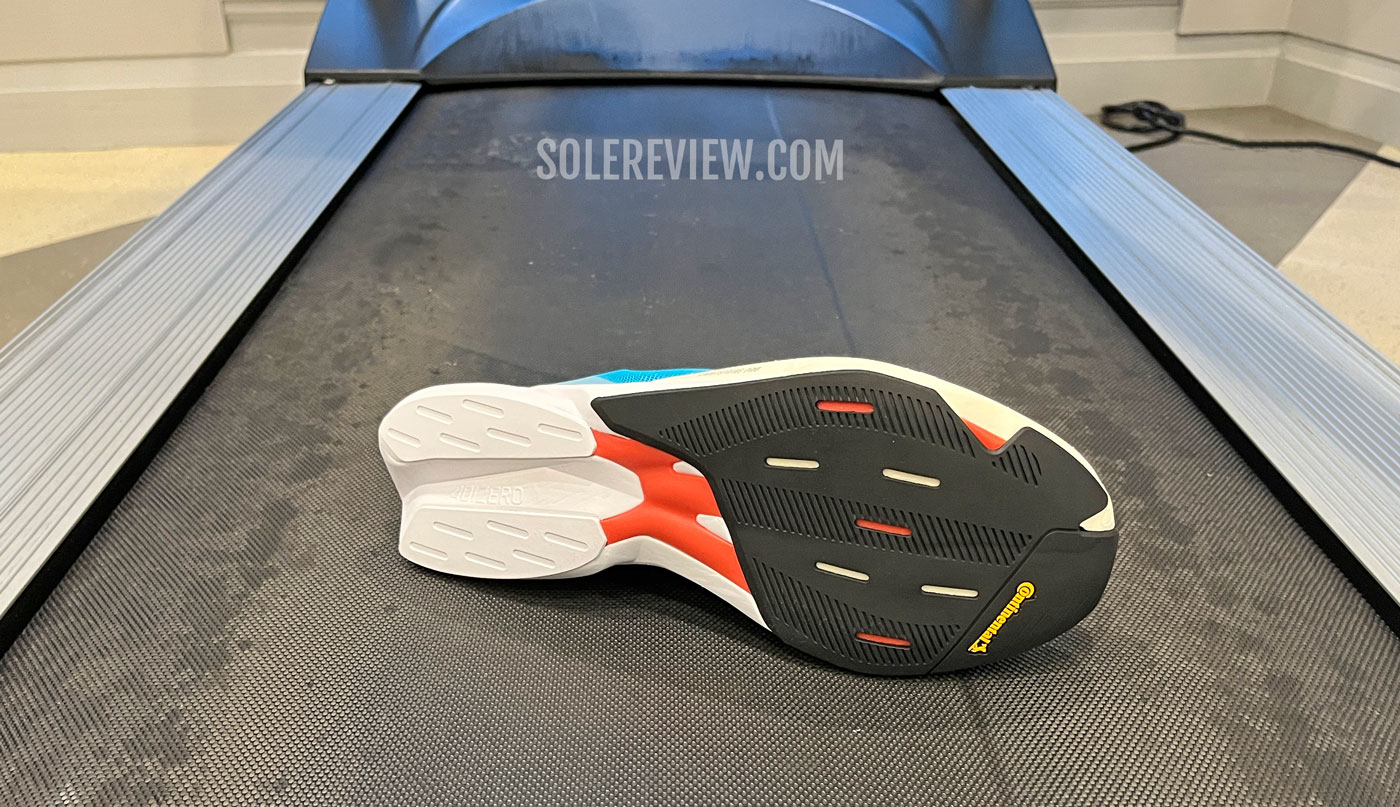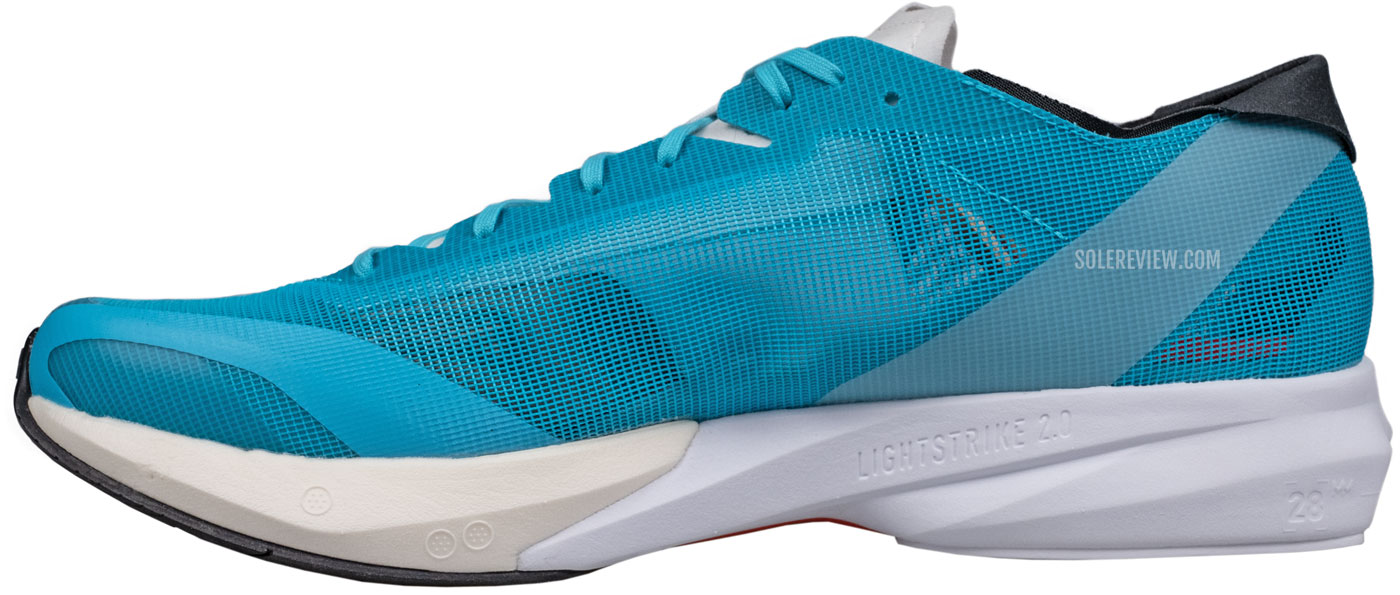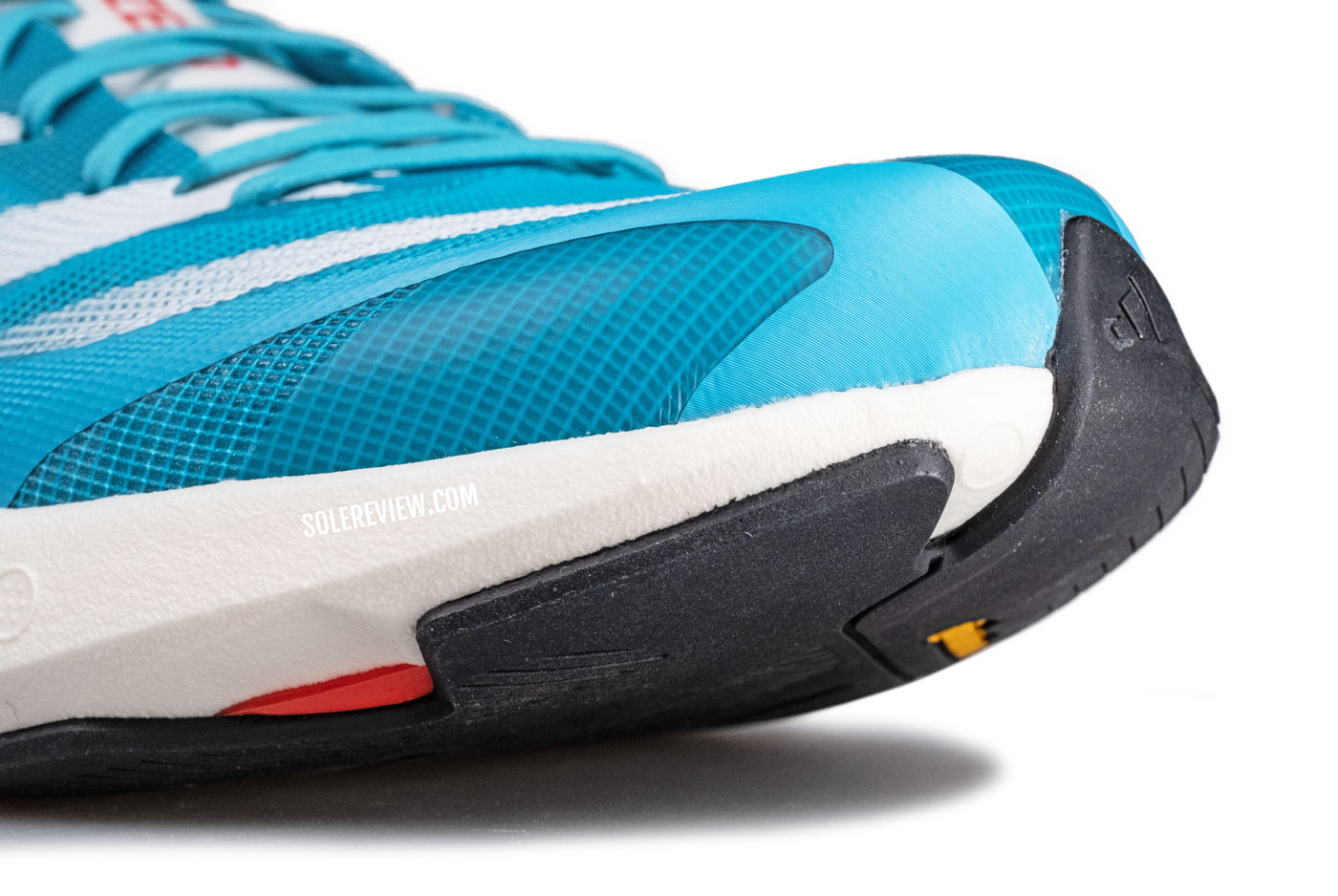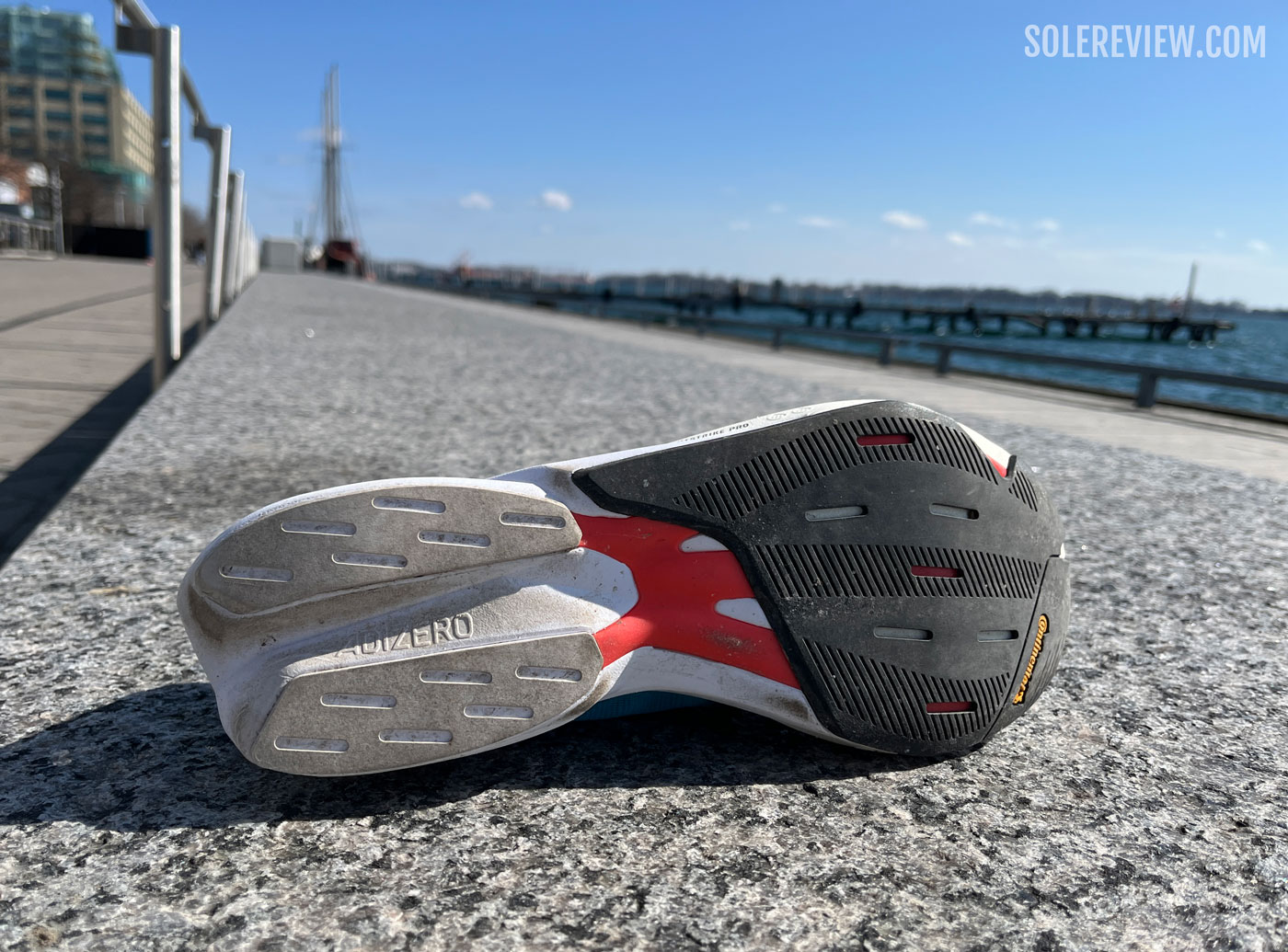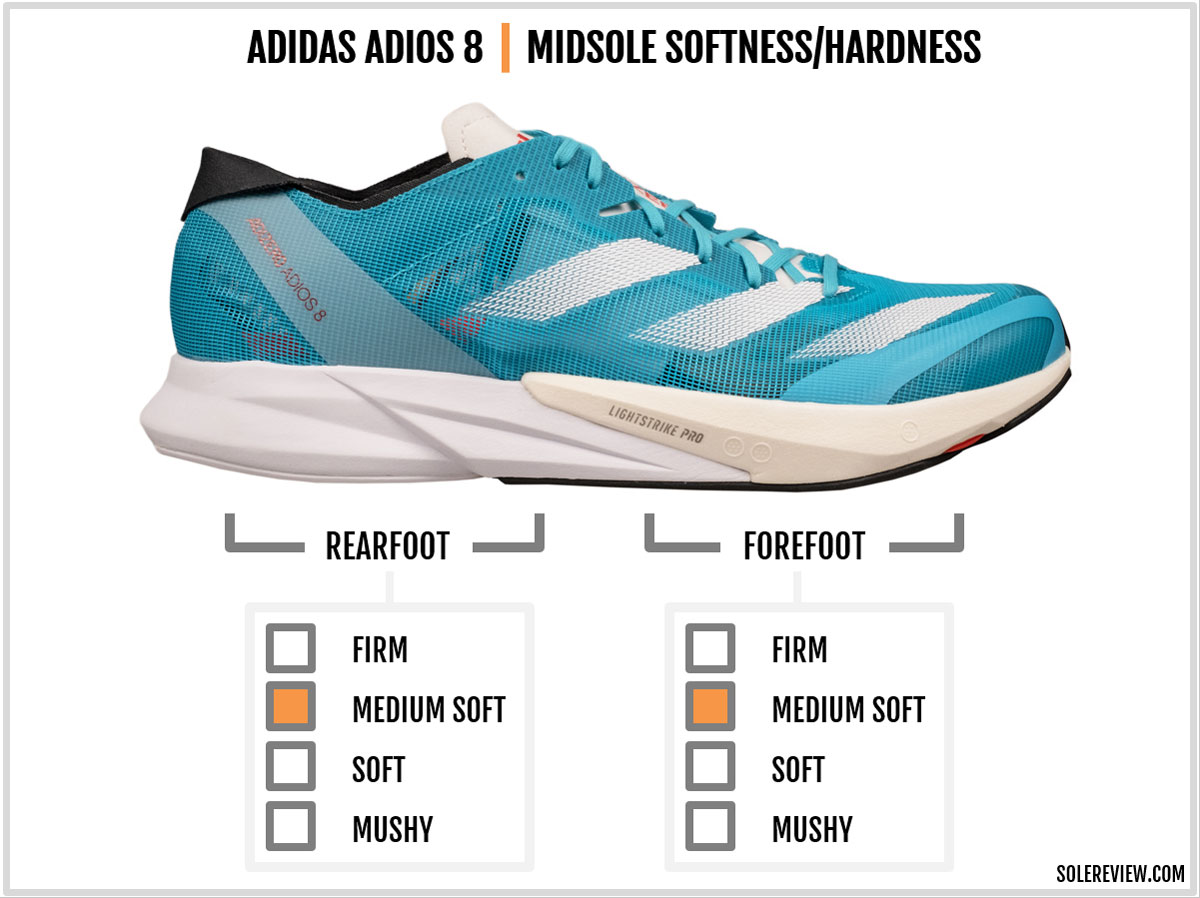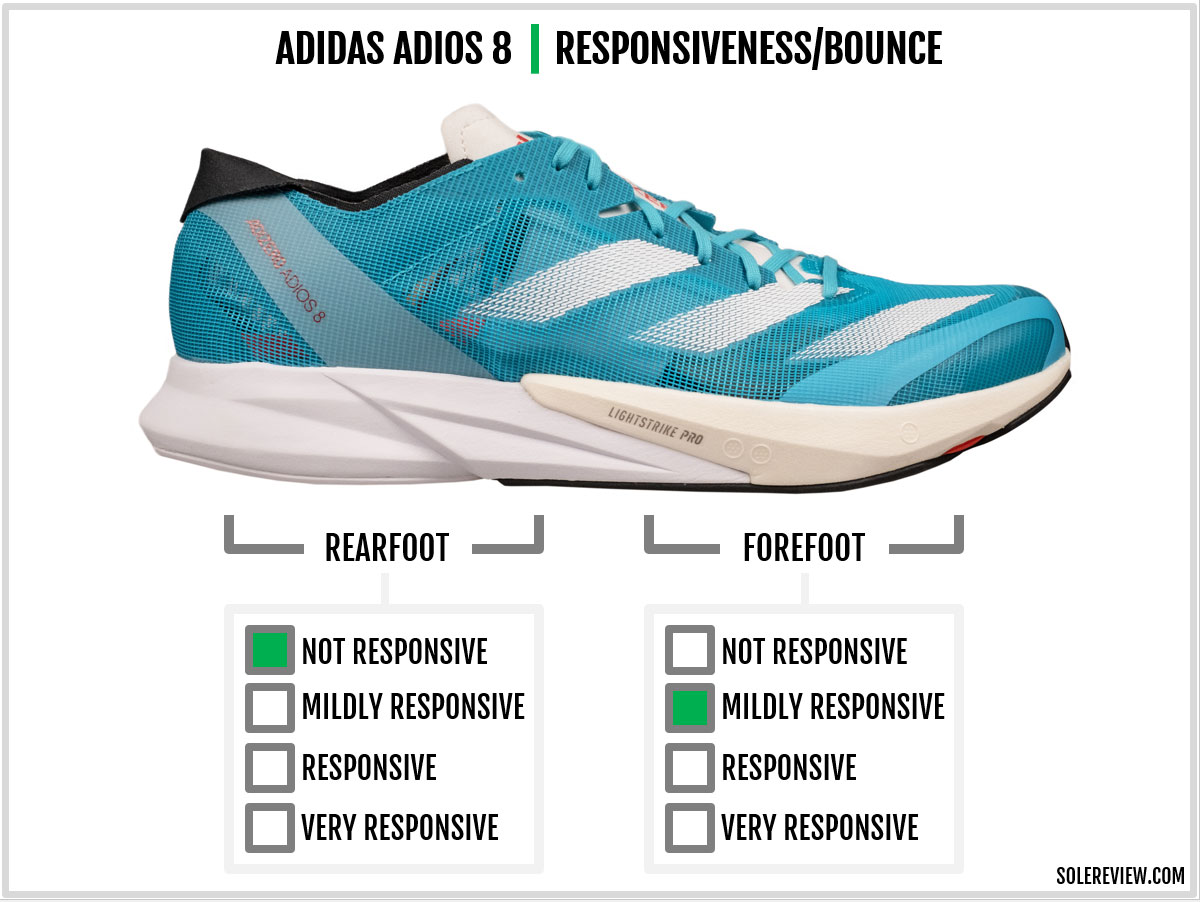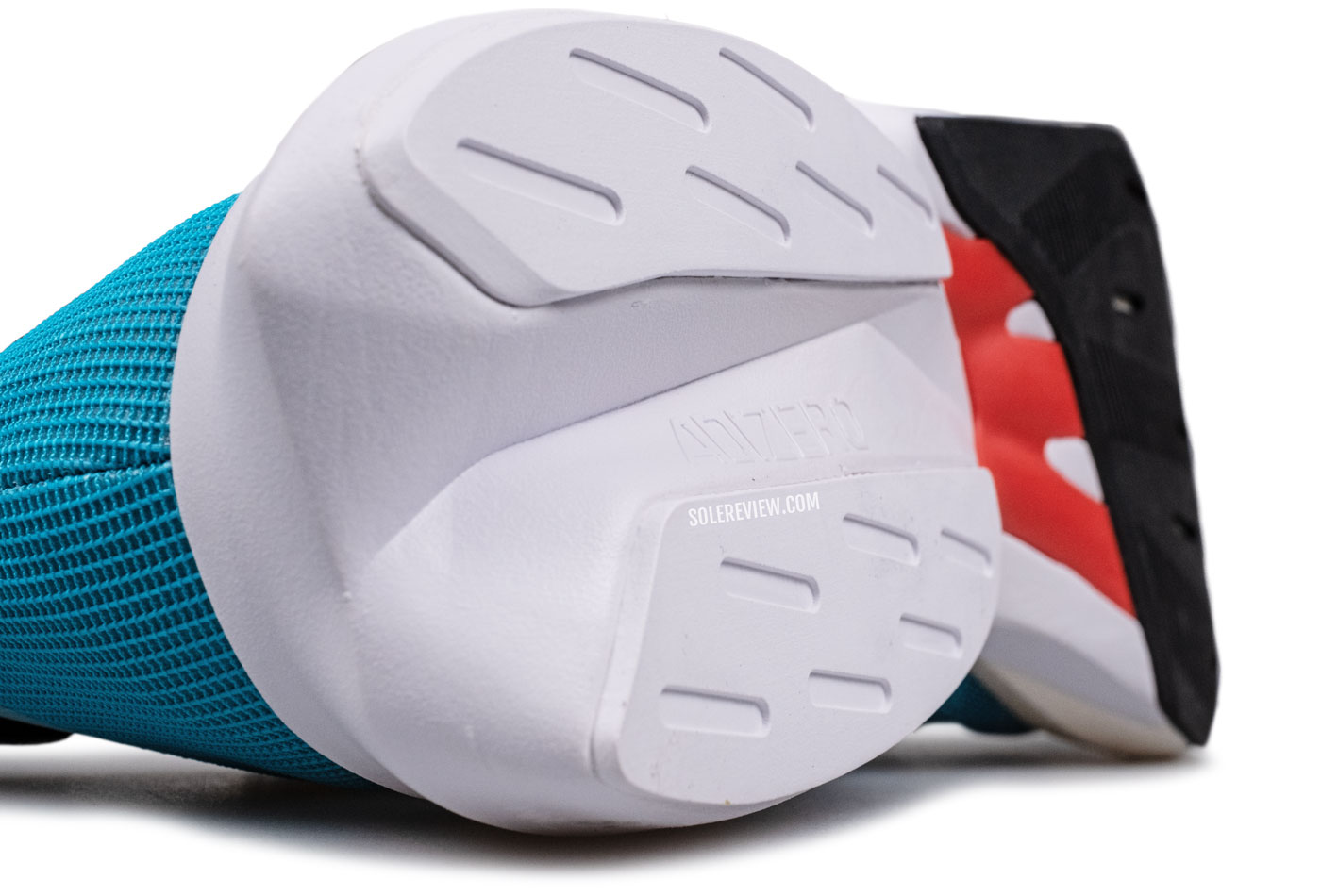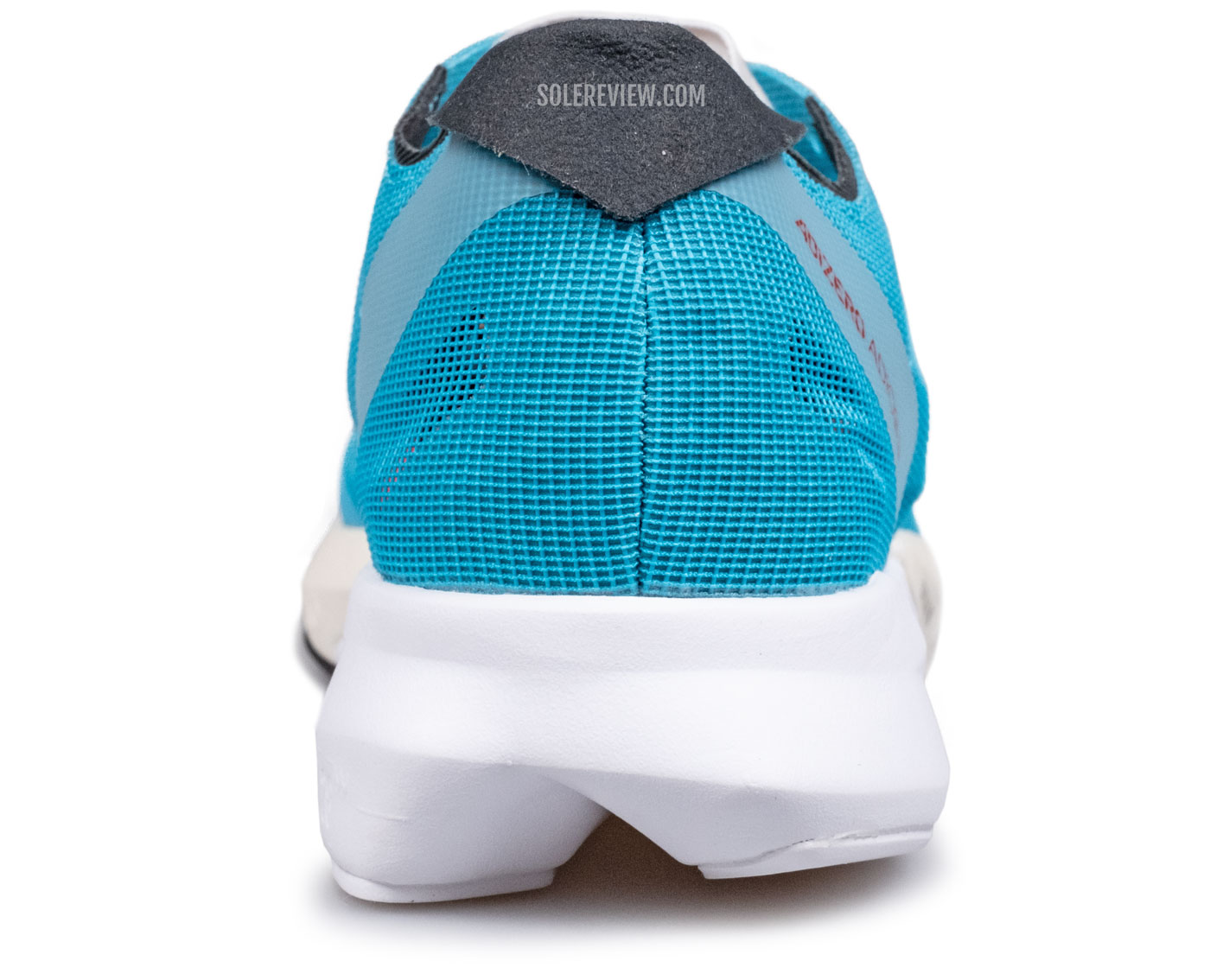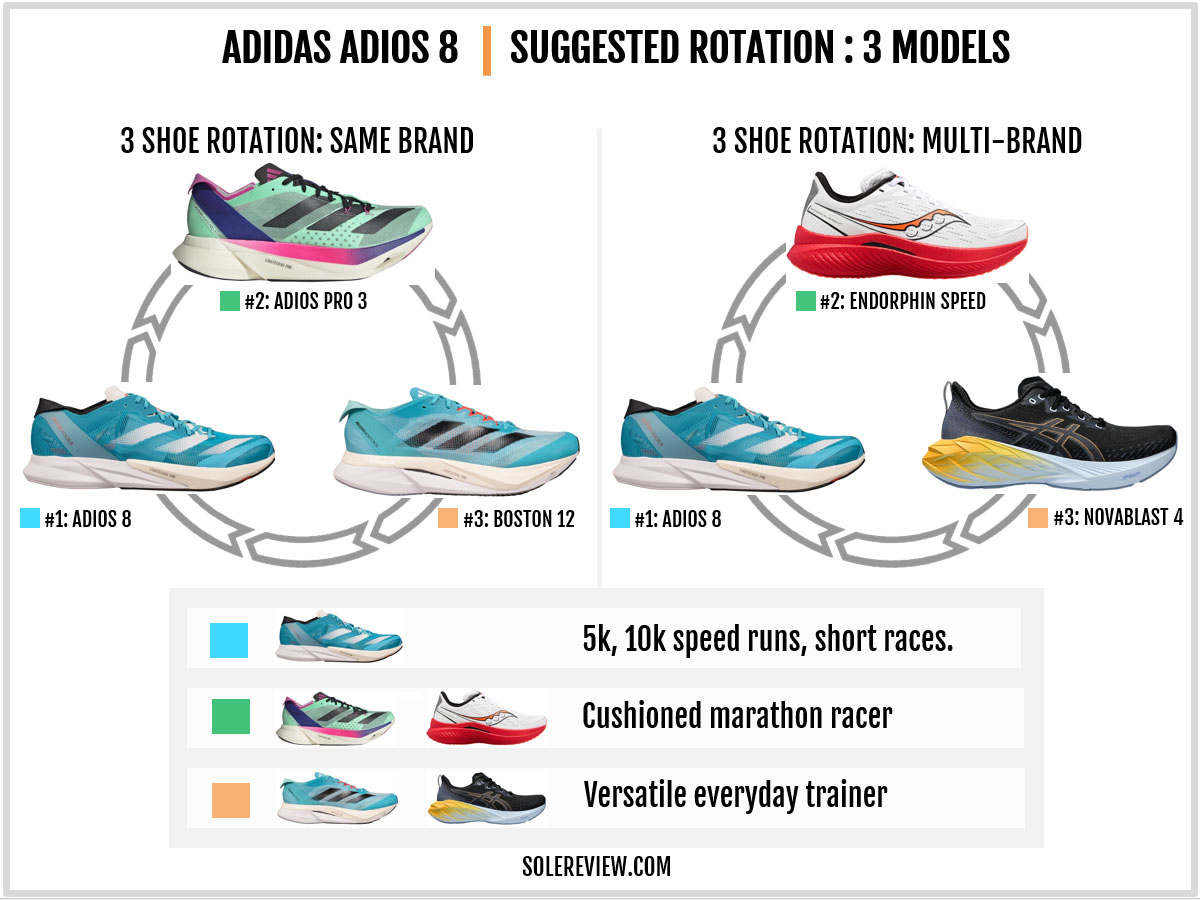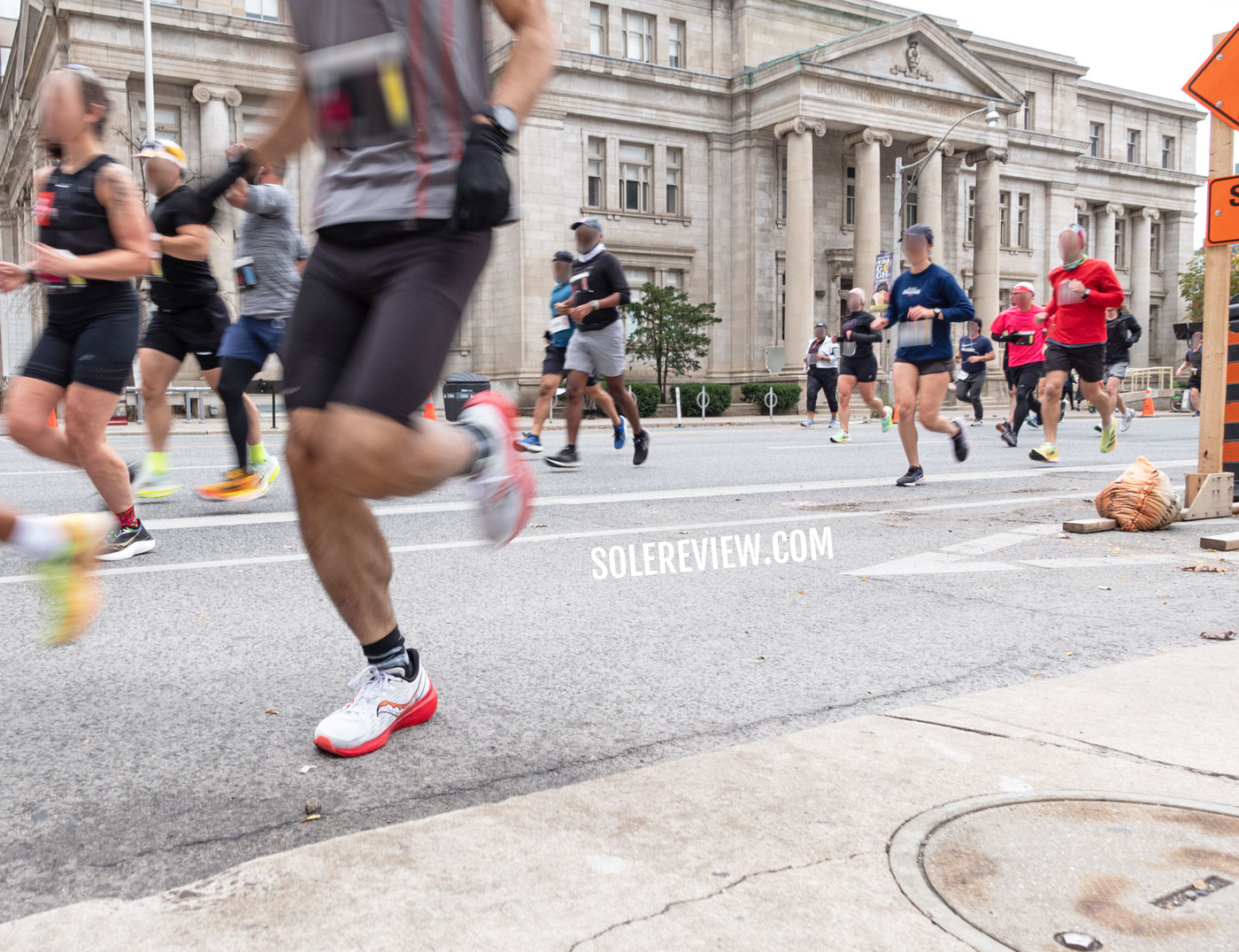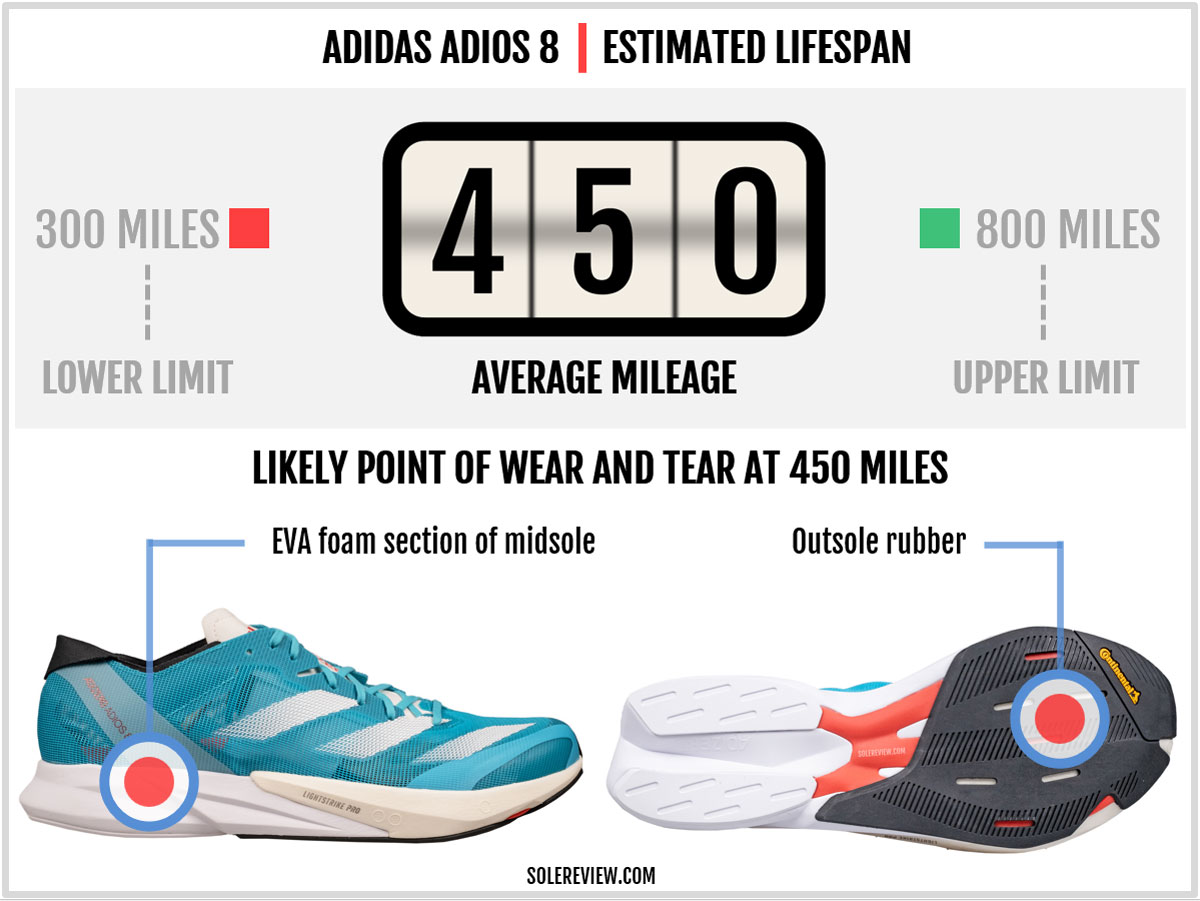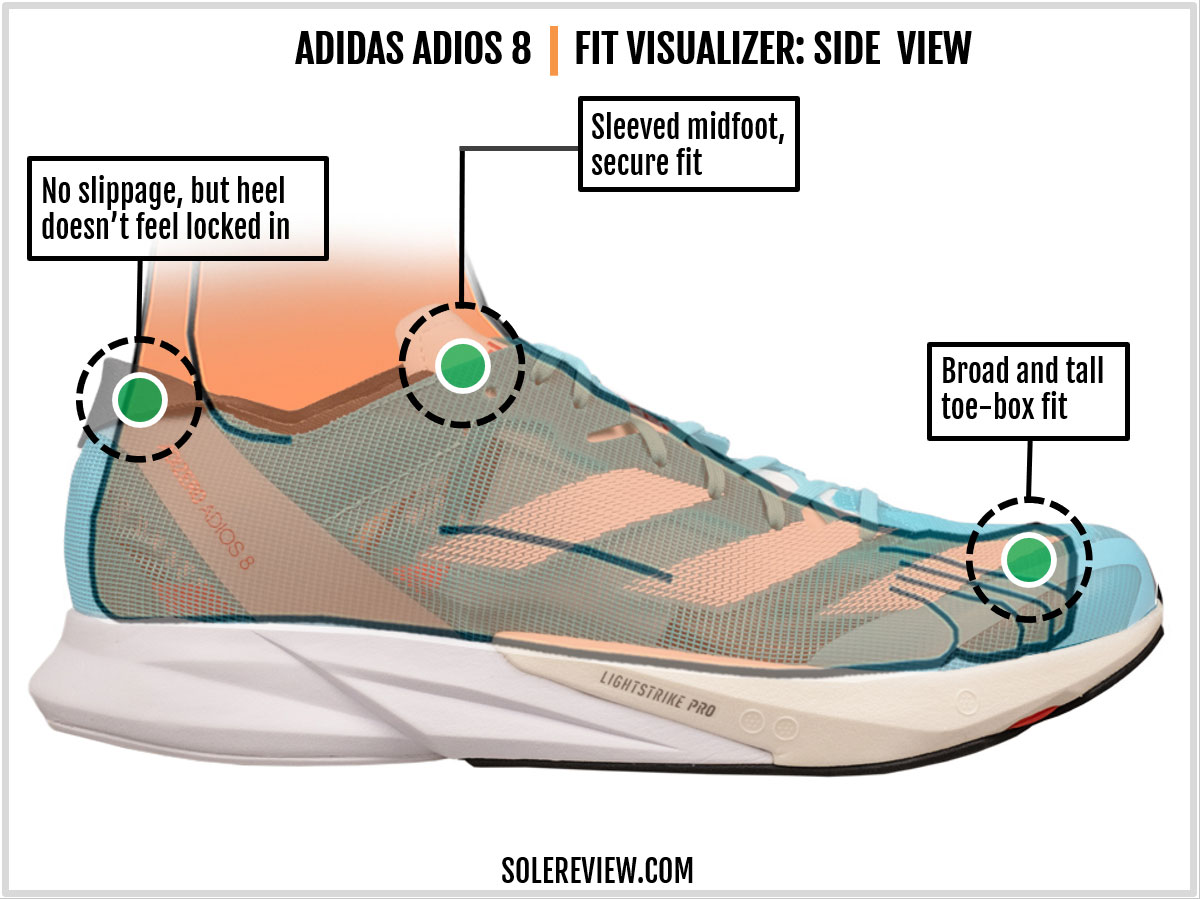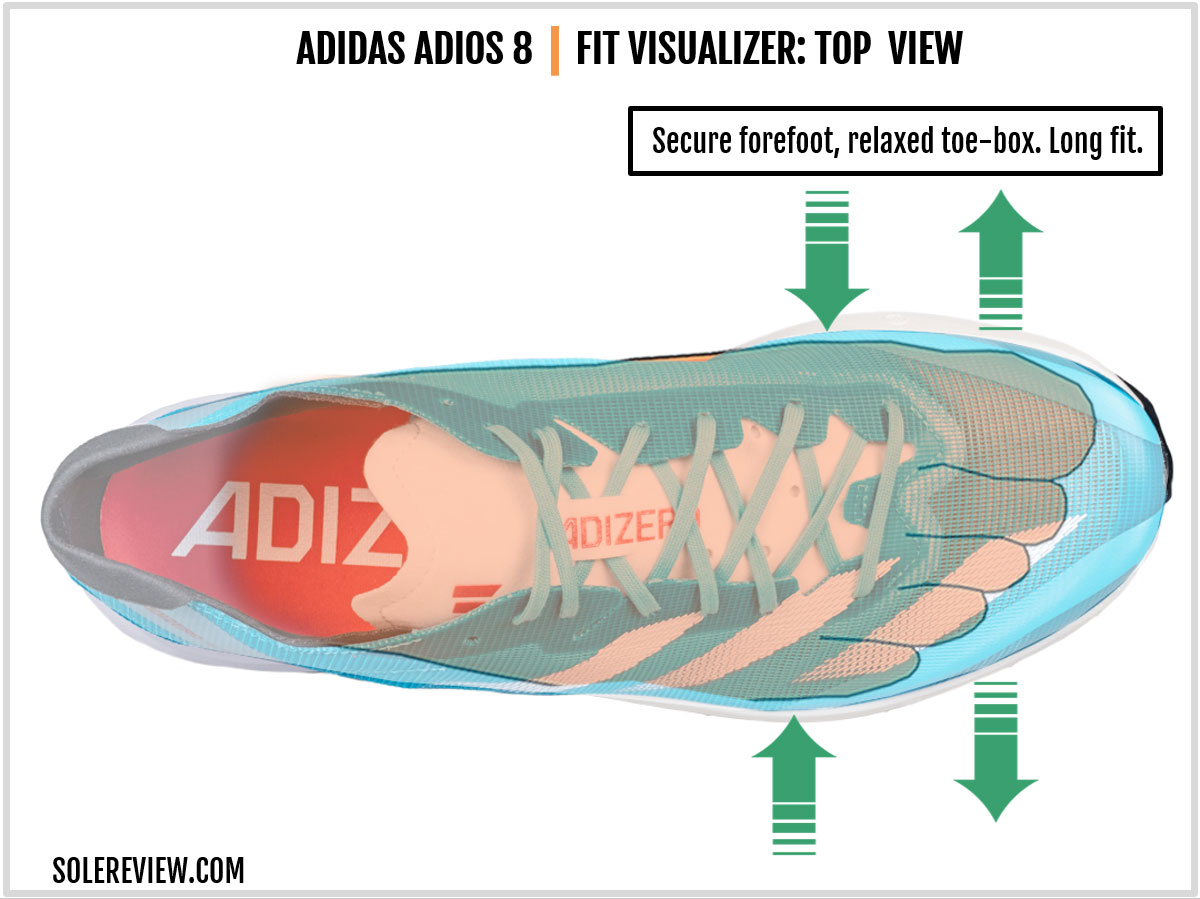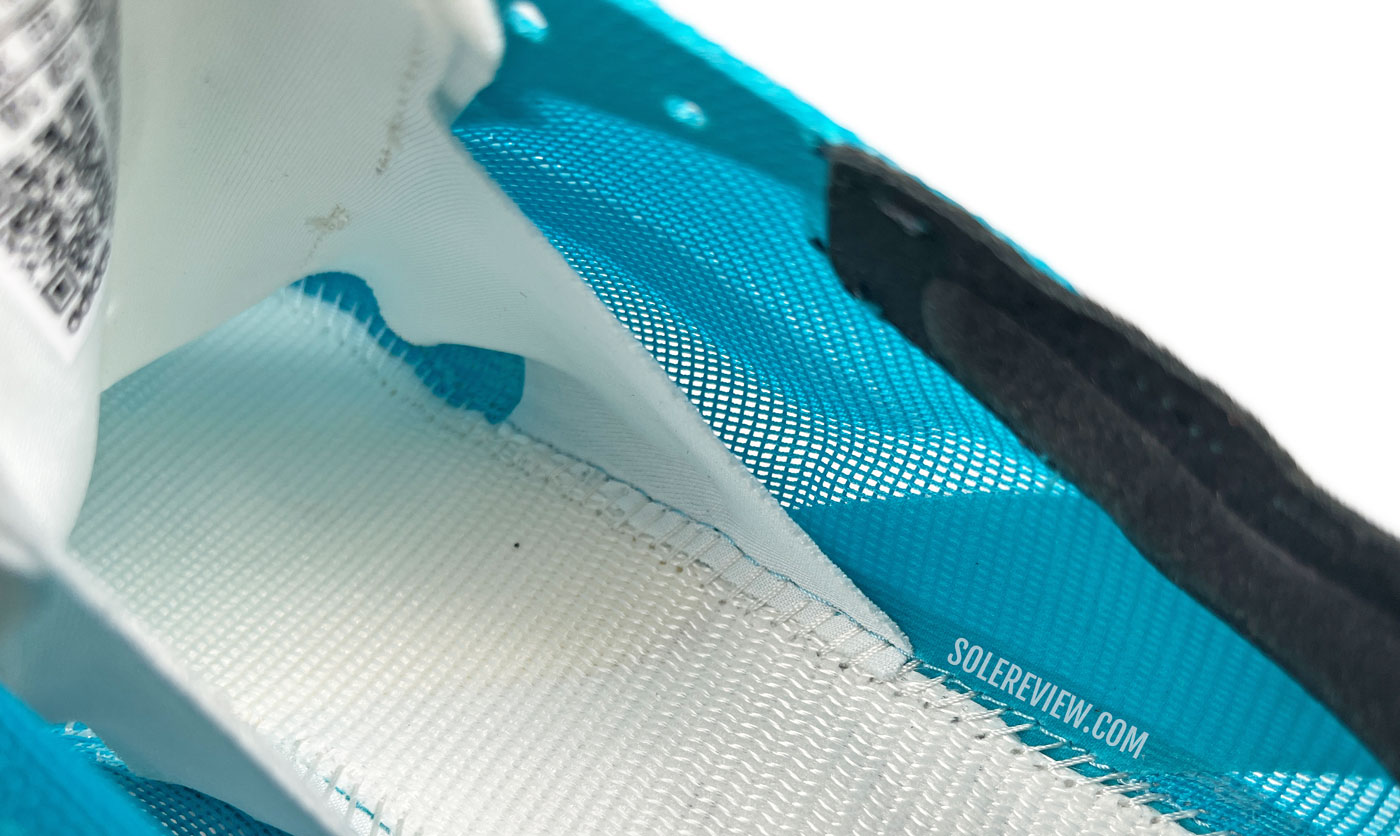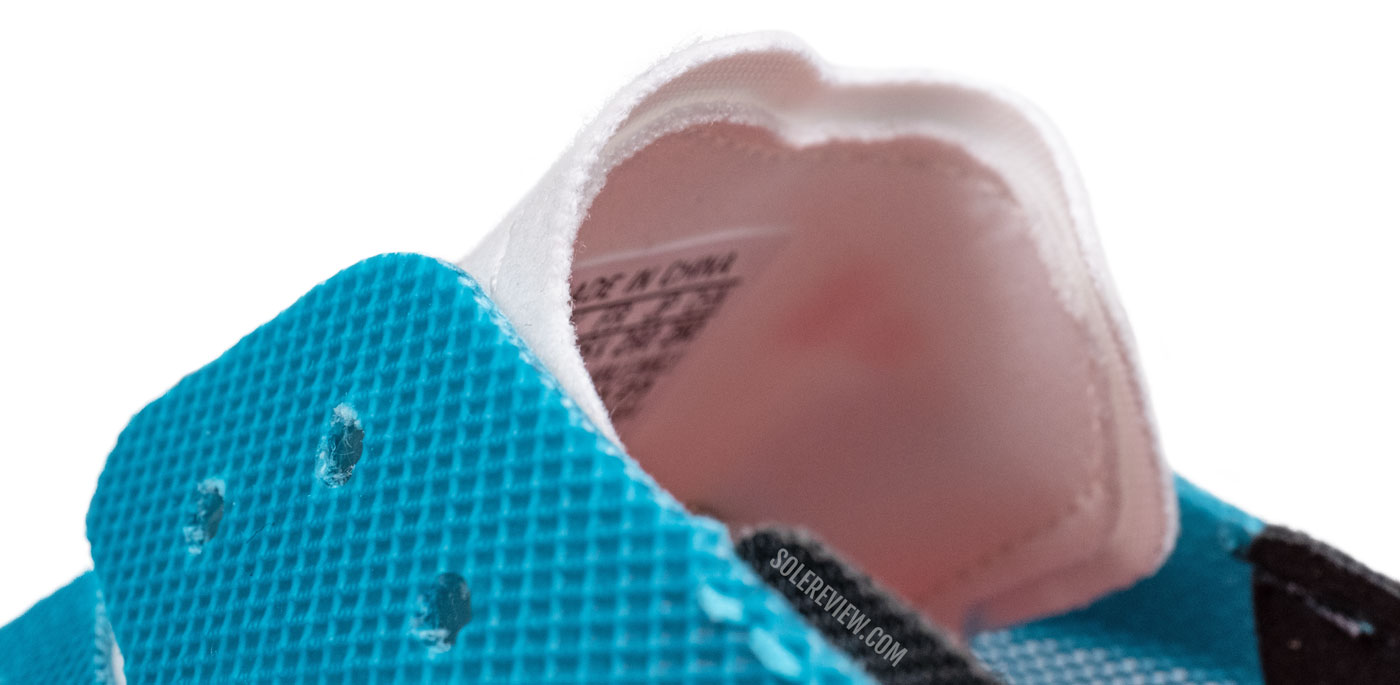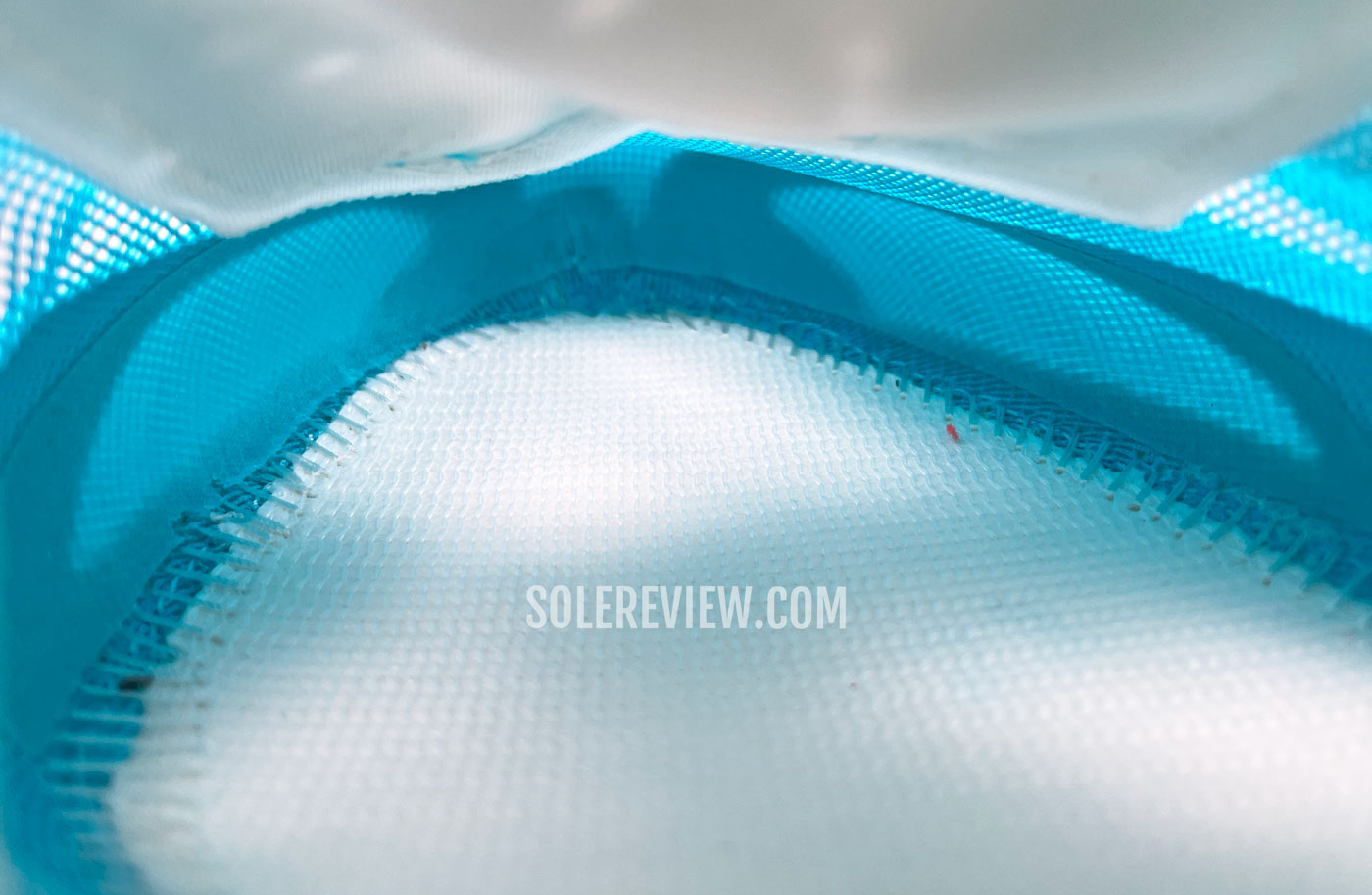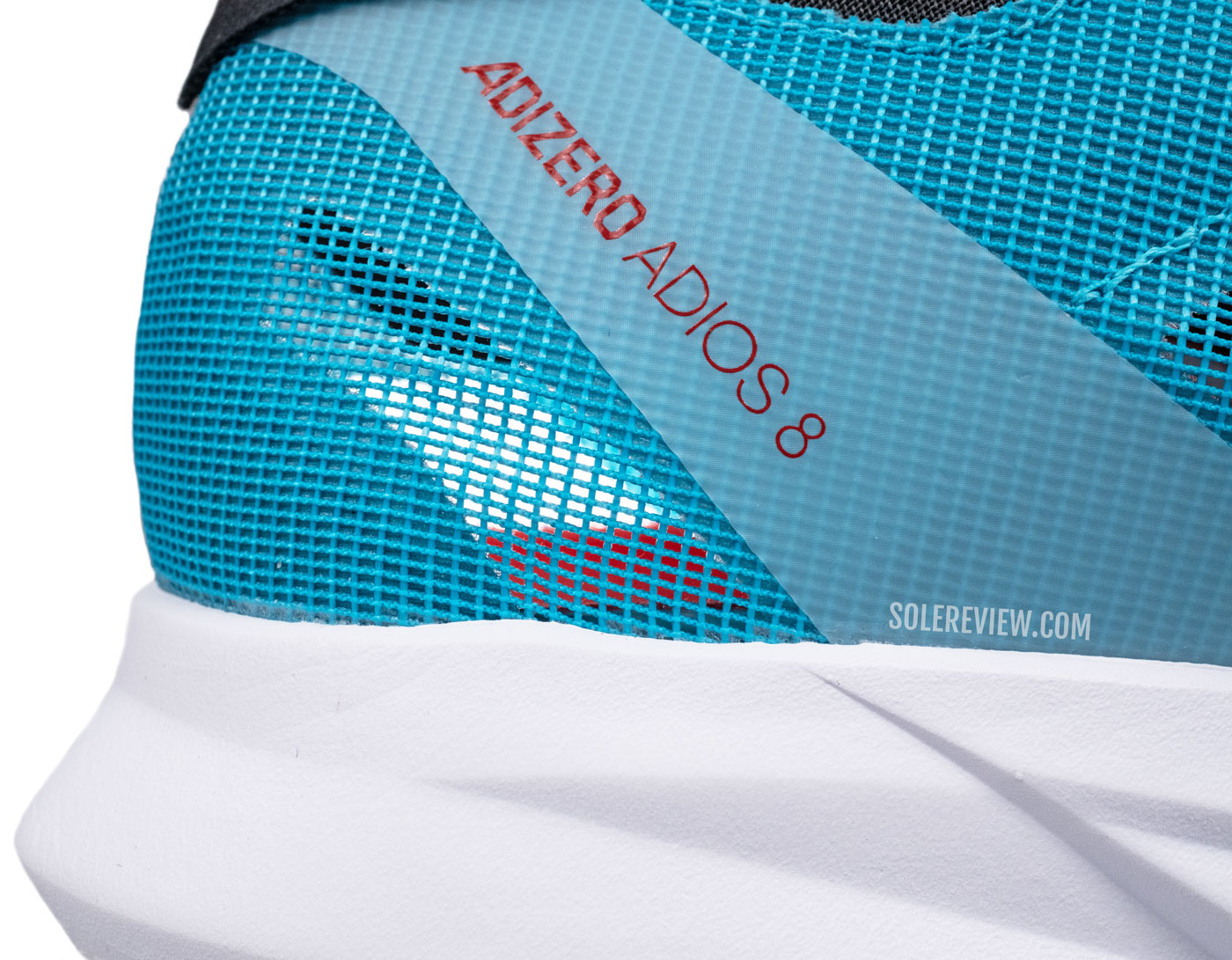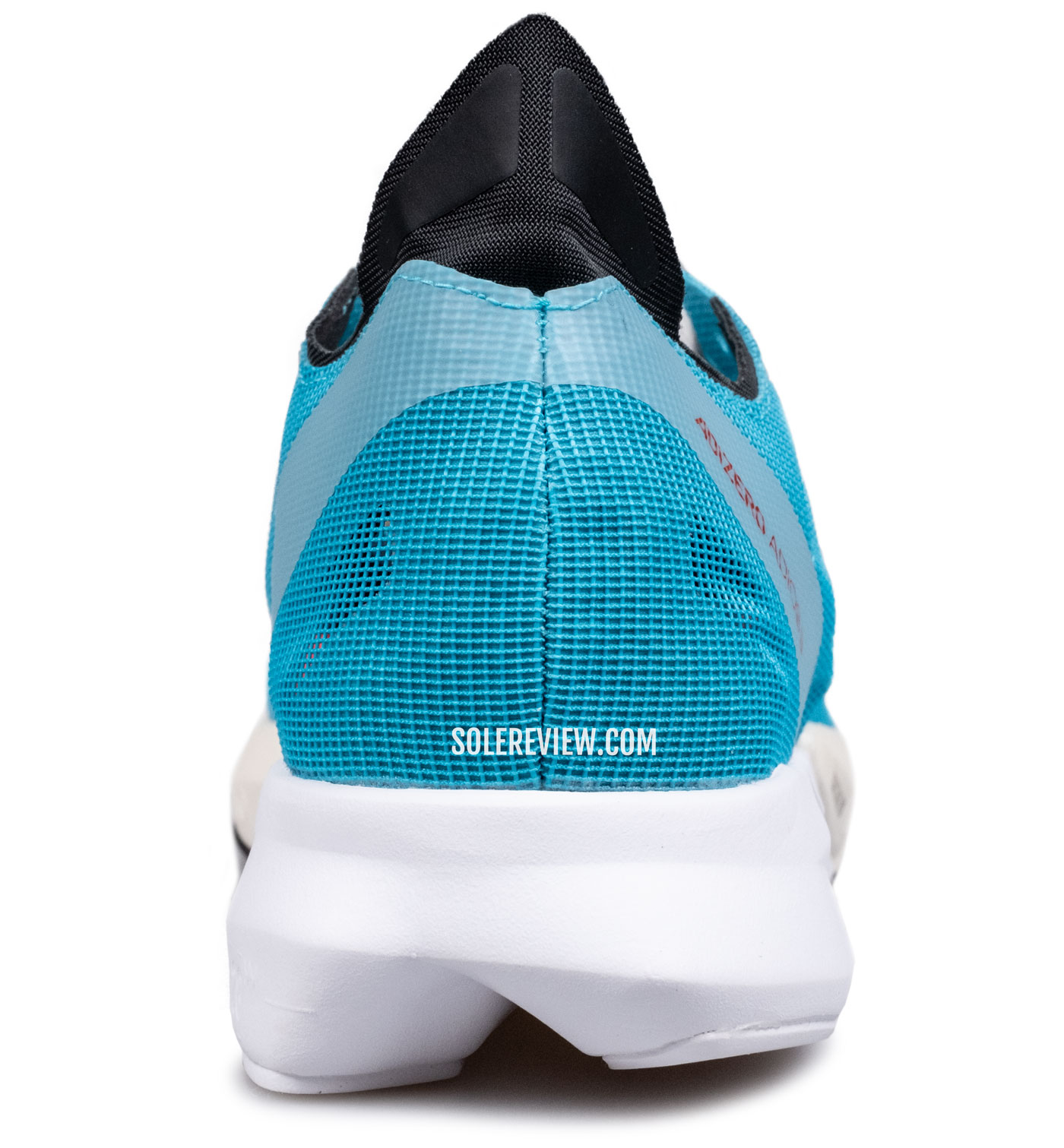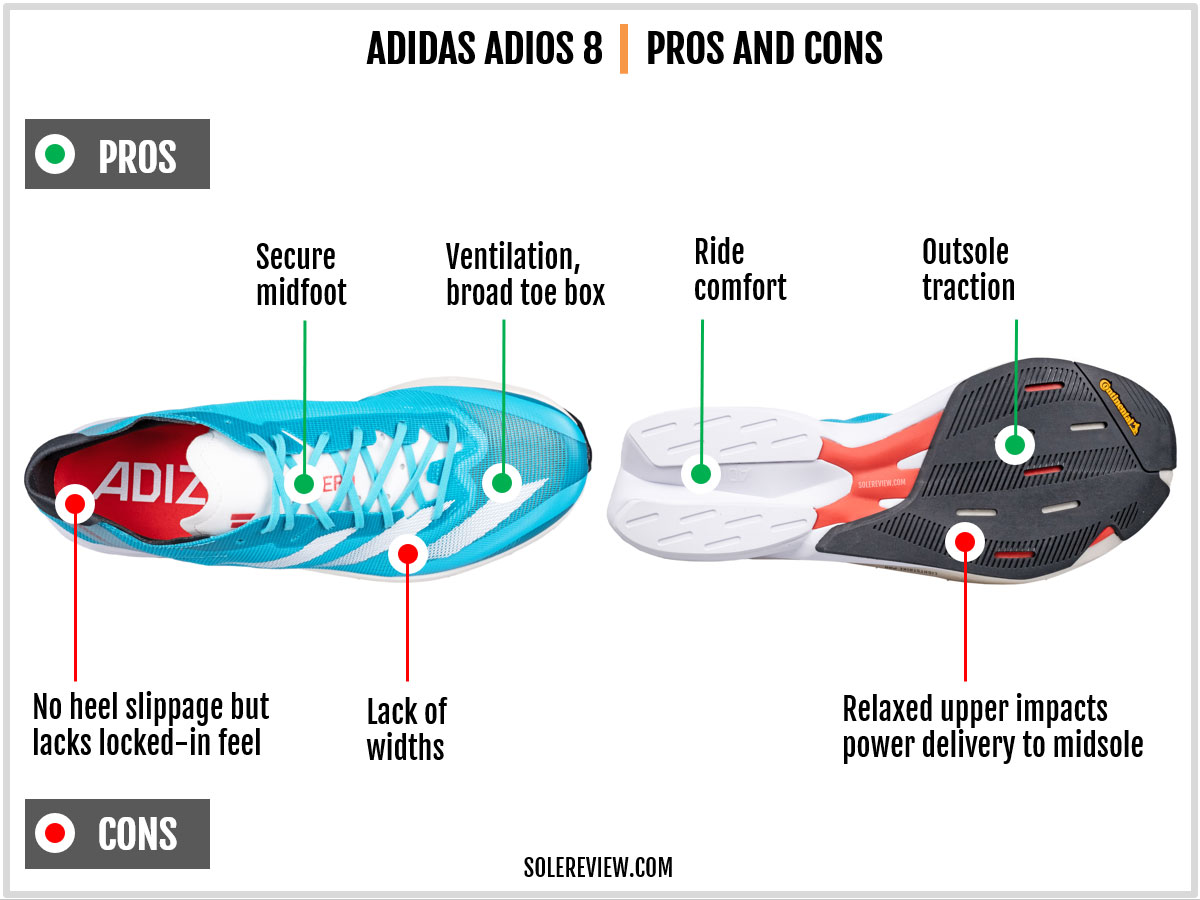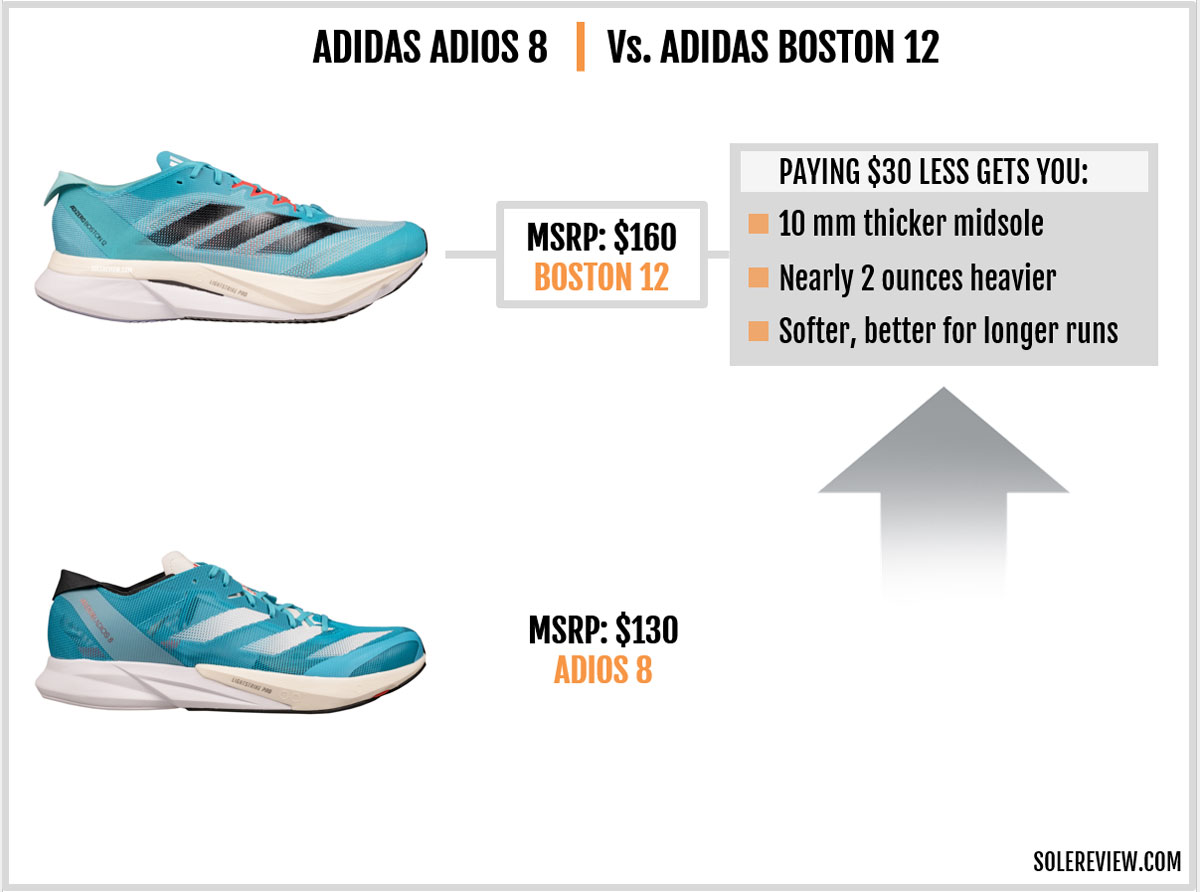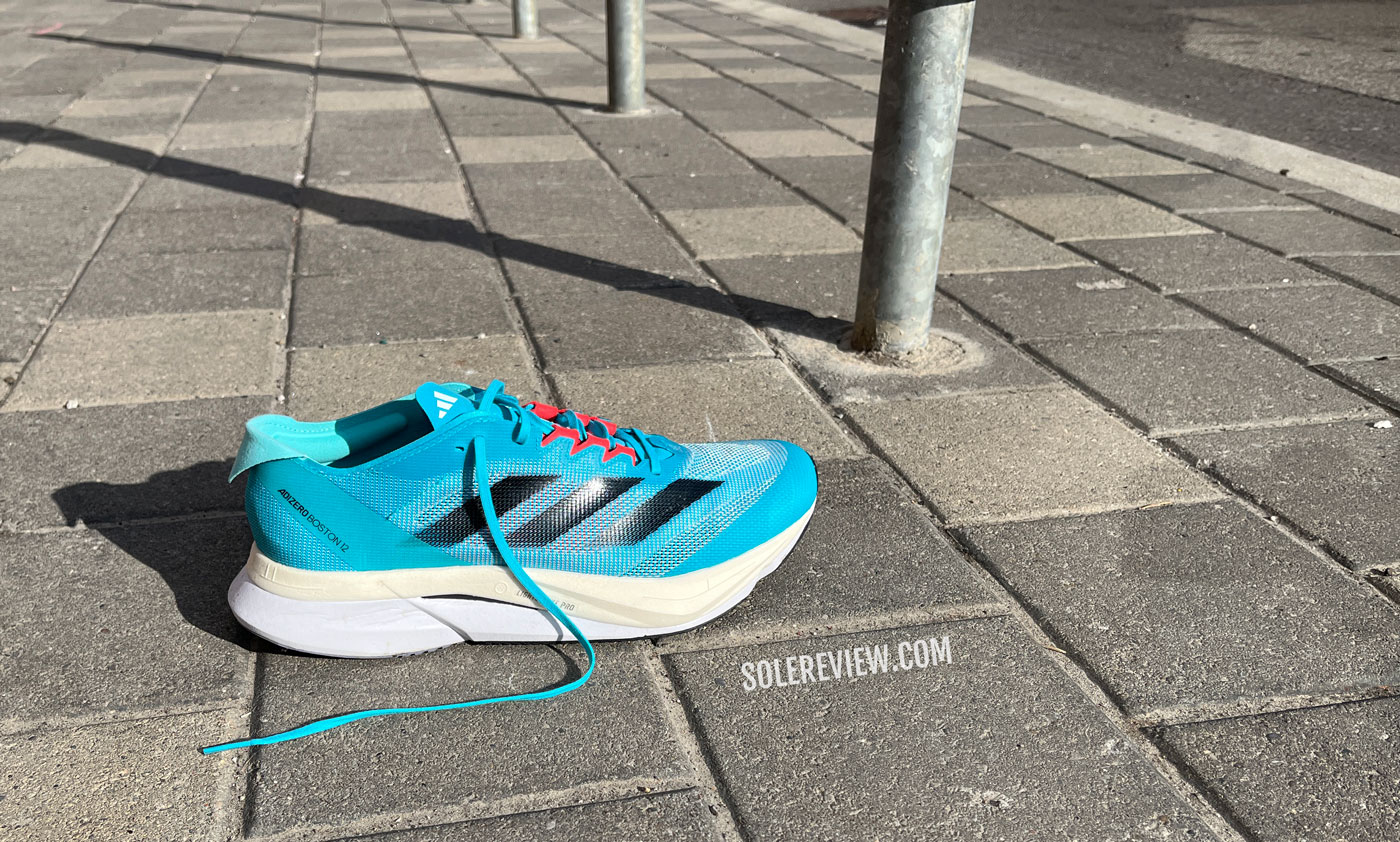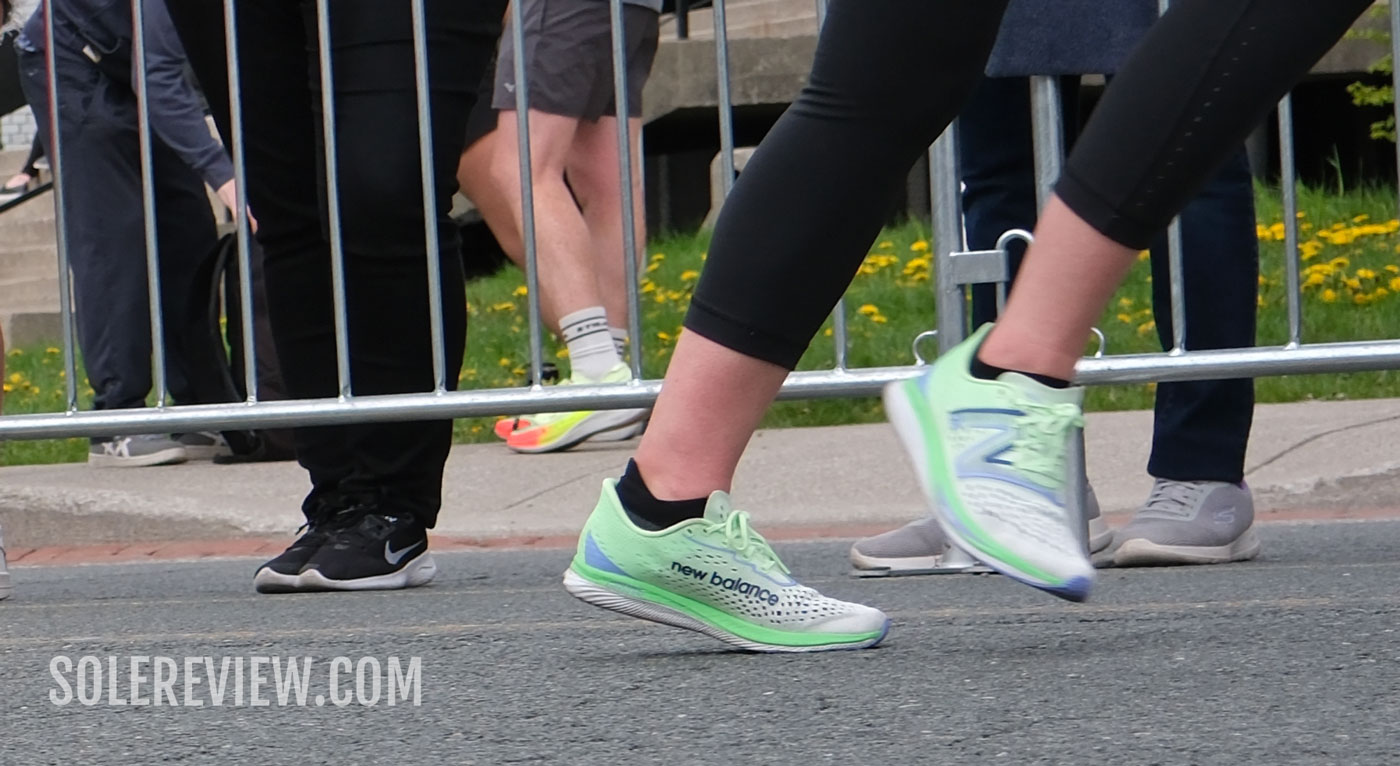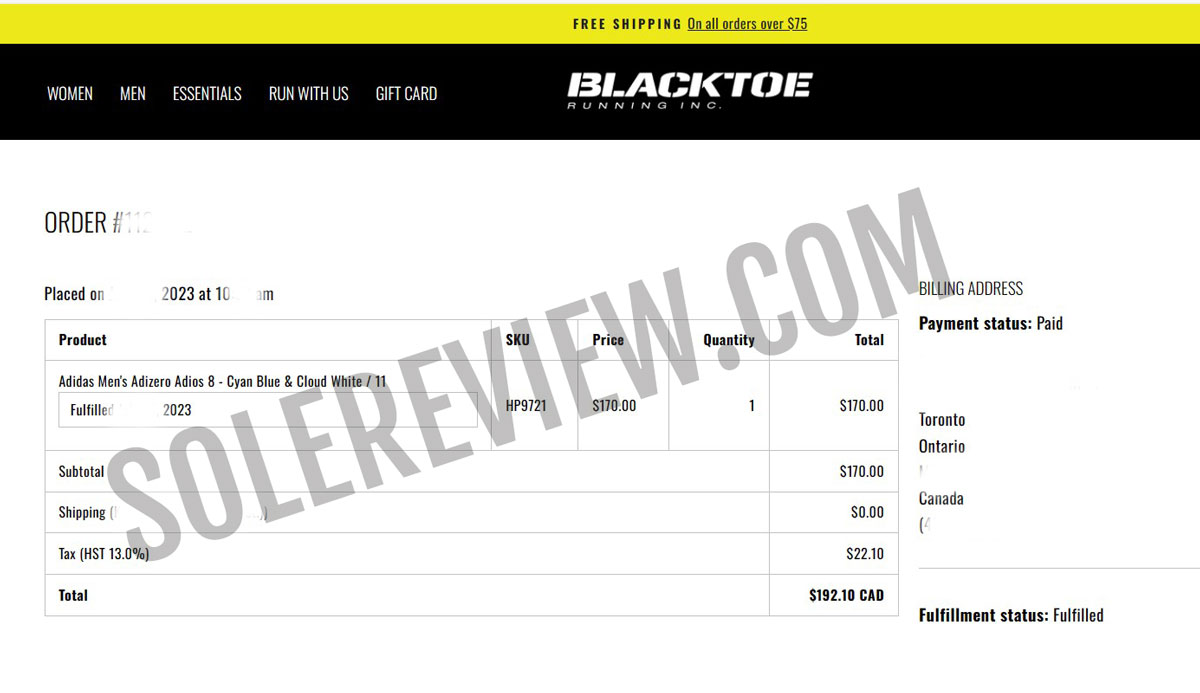
For this review, Solereview paid the full retail price for the adidas adios 8. The amount is in Canadian Dollars
In this review:
SUMMARY AND VERDICT
The adidas adios 8 isn’t what most would call a fun shoe. With exceptions, running shoes such as these aren’t supposed to be fun.
And what kind of shoe is the adios 8, exactly?
It’s a shoe with just enough cushioning to prevent the foot from getting beat up during a 10K run. It’s a shoe with a secure fit to lock the foot during quick toe-offs. And more importantly, a shoe that can keep up with 3:30 min/km (5:30 min/km) running speeds.
The adidas adios has always been that kind of a shoe. Our first meeting with the adios was in 2014, and while the shoe has evolved to keep up with the times, its basic premise has remained the same. It’s still a good shoe for short races, intervals, tempo runs and their like.
A recurring theme in the adizero adios’s (and Boston’s) evolution has been incremental comfort. For example, the adios 8’s fit does not have the vice-like grip of the adios 4 and 5, nor does it have the pancake flat midsole of the 2014-15 era.
Whereas the vintage adios models were all business, the modern adios has a bit of a slack built in. It’s much easier on the feet than it used to be. We don’t blame adidas for going in that direction, considering the current industry trend is more soft and less firm.
The adios 8 is also the softest it’s ever been, and it also has the most room. The changes mirror that of the Boston, albeit on a smaller scale and with different components.
THE ADIDAS ADIOS 8 COMPARED WITH ADIOS 7
Where the adios 7 and adios 8 differ the most is how the different components of the forefoot midsole come together. Sure, the adios 8’s midsole is softer and the upper has more room, but focusing on just those two traits would be ignoring the larger picture.
On the adios 7, all four components – namely the Lightstrike Pro, Lightstrike EVA, Torsion shank, and outsole – worked more cohesively. The firmness of the outsole did not stand out, nor did the Torsion shank.
The adios 7’s outsole and midsole design made that happen.
Not only was the outsole (and midsole) footprint narrower, but the Lightstrike Pro foam was partially interlocked with a firmer Lightstrike EVA foam. The outsole wasn’t one-piece like it is on the adios 8, but split into two down the forefoot.
The articulated nature of the outsole allowed it to flex with the midsole without much resistance. Also, the Torsion shank was two-pronged under the forefoot, versus the three-prong design on the adios 8.
The adios 8 is different. It may have a softer ride due to the wider outsole (and higher foam volume) and softer Lightstrike EVA, but each of the components make their presence felt during the gait cycle.
The softness of the Lightstrike Pro foam under the forefoot is noticeable, but so is the firmness of the outsole. The faint outline of the Torsion rods flexing under the large toe is also briefly felt during toe-offs. Lastly, the single-piece forefoot outsole is noisier than the adios 7.
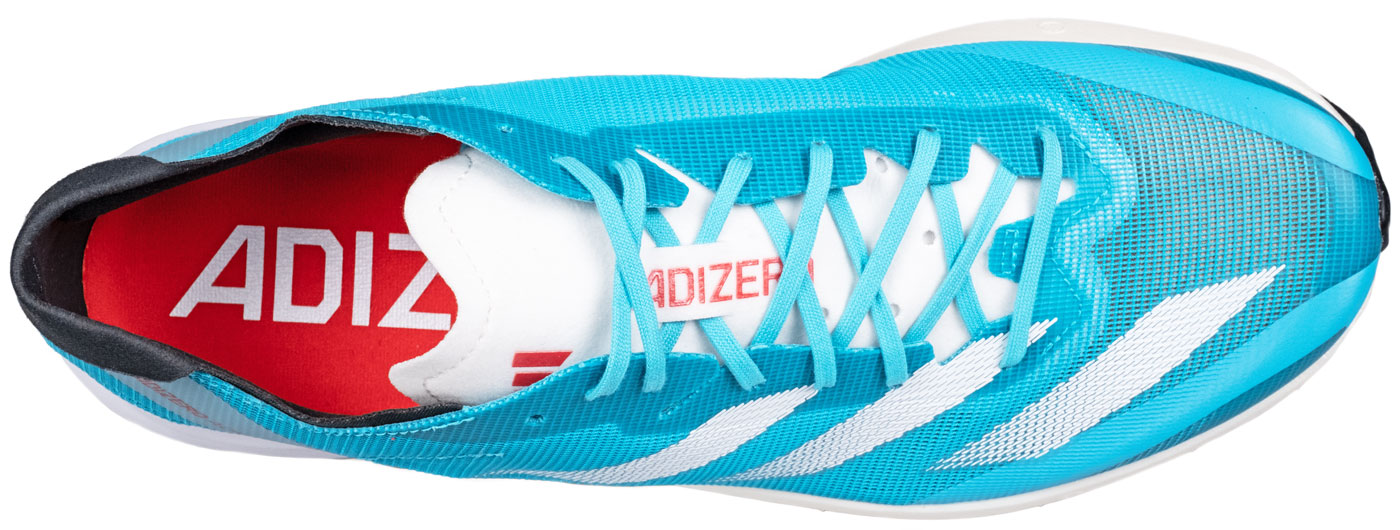
The toe box swaps the stitched bumper with a fused kind. This makes the toe box broader and (more) spacious.
Like the Boston 12, the adios 8 cleans up the exterior of the upper, with the result being more forefoot space – both vertically and horizontally. The synthetic leather over the toe-box has been replaced with a thin layer of fused material. The welded overlays that we last saw over the adios 7’s forefoot and midfoot have also been dispensed with.
The 7-row lacing and inner sleeve work as they’re supposed to, and provide a secure lock-down – even if that doesn’t translate into adios 6 levels of snugness.
For a change, the retail price has stayed put at $130.
THE MIDSOLE DESIGN AND RIDE EXPERIENCE
The adidas adios 8 uses the signature Lightstrike Pro foam in its midsole, but there isn’t a lot of it. Front and rear stack heights of 20 mm and 28 mm mean that we’re dealing with a running shoe at the lower end of the cushioning spectrum.
So while the adios 8 no longer has the punishing ride quality of the vintage adios, it works best for distances under 10K. This isn’t to say that a half-marathon is a no-go zone, but there are better shoes for that kind of thing.
It’s not just about the cushioning comfort; the adios 8 doesn’t have a rocker profile that shares some of the workload. This is a shoe where the foot does most of the heavy lifting; the midsole has no roll-forward quality that shoes like the Boston 12 produce.
There’s a slight assist from the prong-like extension of the Torsion rods during forefoot transitions, but it’s minimal.
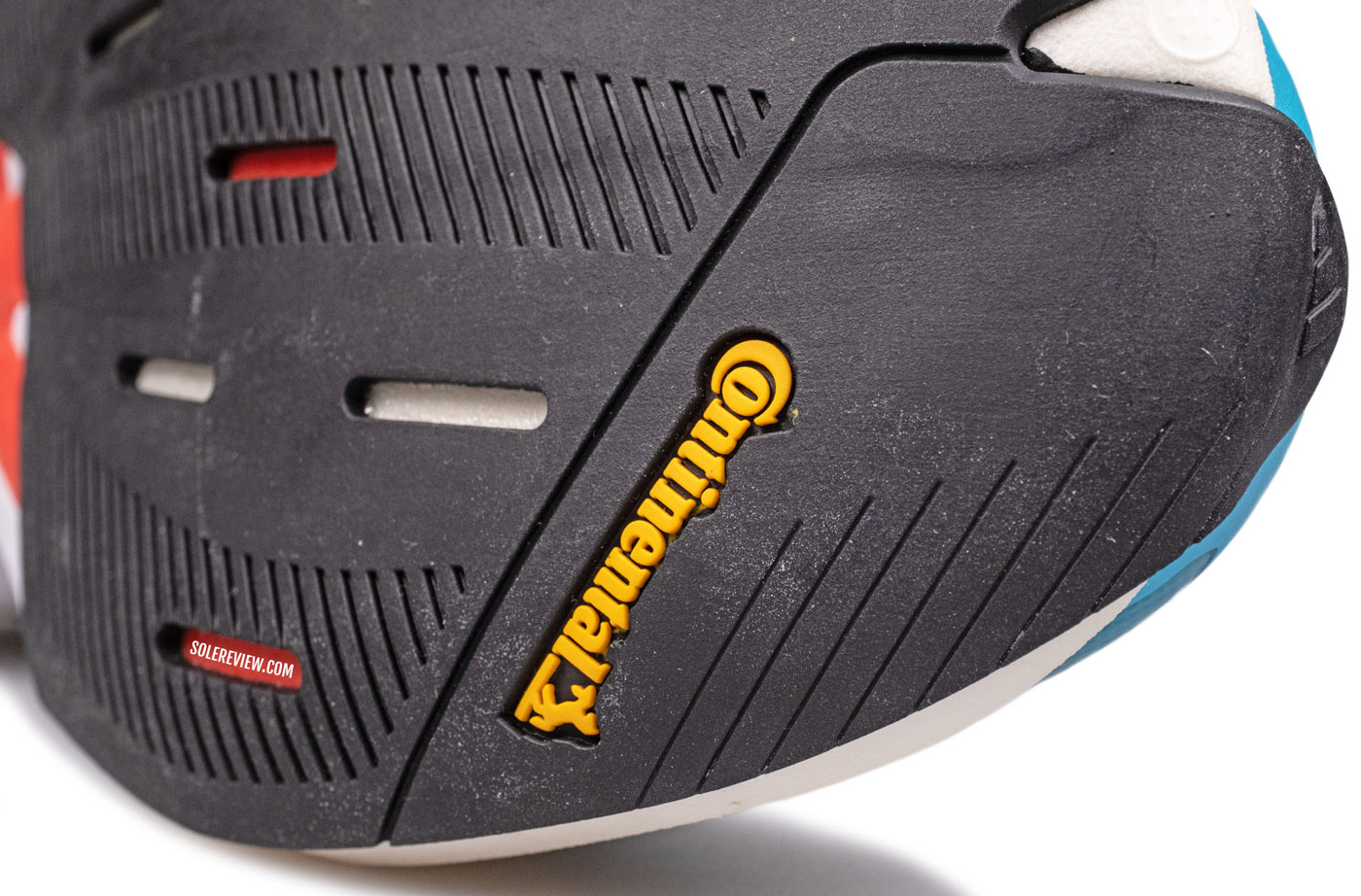
Unlike the adios 6 and 7, the forefoot outsole isn’t made of two parts. While a bit slappy, the grip is excellent on wet and dry roads.
The traction from the Continental rubber outsole is excellent on wet and dry. The forefoot outsole is a bit slappy and loud; we attribute that to the one-piece design and flat surface texture. The outsole is also slightly concaved, and that too, is a likely contributor to the loudness.
The 20 mm forefoot provides good ground feedback; this works favorably at higher speeds when the transitions need to happen quickly with minimal dwell time. While the easygoing fit is welcome during a 10K run, a tighter upper would have done a better job at power transfer as well as isolating the responsiveness of the Lightstrike Pro foam.
Forefoot landings are easier on the feet than the adios 7. The new outsole is at least 5 mm wider across the forefoot, and that means there’s more Lightstrike Pro foam stacked over it.
Also, this time, the Lightstrike Pro foam isn’t stacked over an EVA rim. We get unadulterated Lightstrike Pro foam under the forefoot, even if that means there’s less of it under the midfoot and heel.
Forefoot landings feel cushioned yet responsive and efficient. That said, there’s a cushioning variance between the rearfoot and forefoot.
Despite the matching midsole softness, the cushioning in the rear feels similar to the adizero SL. It’s comfortable and supportive, but rather ordinary in its cushioning delivery.
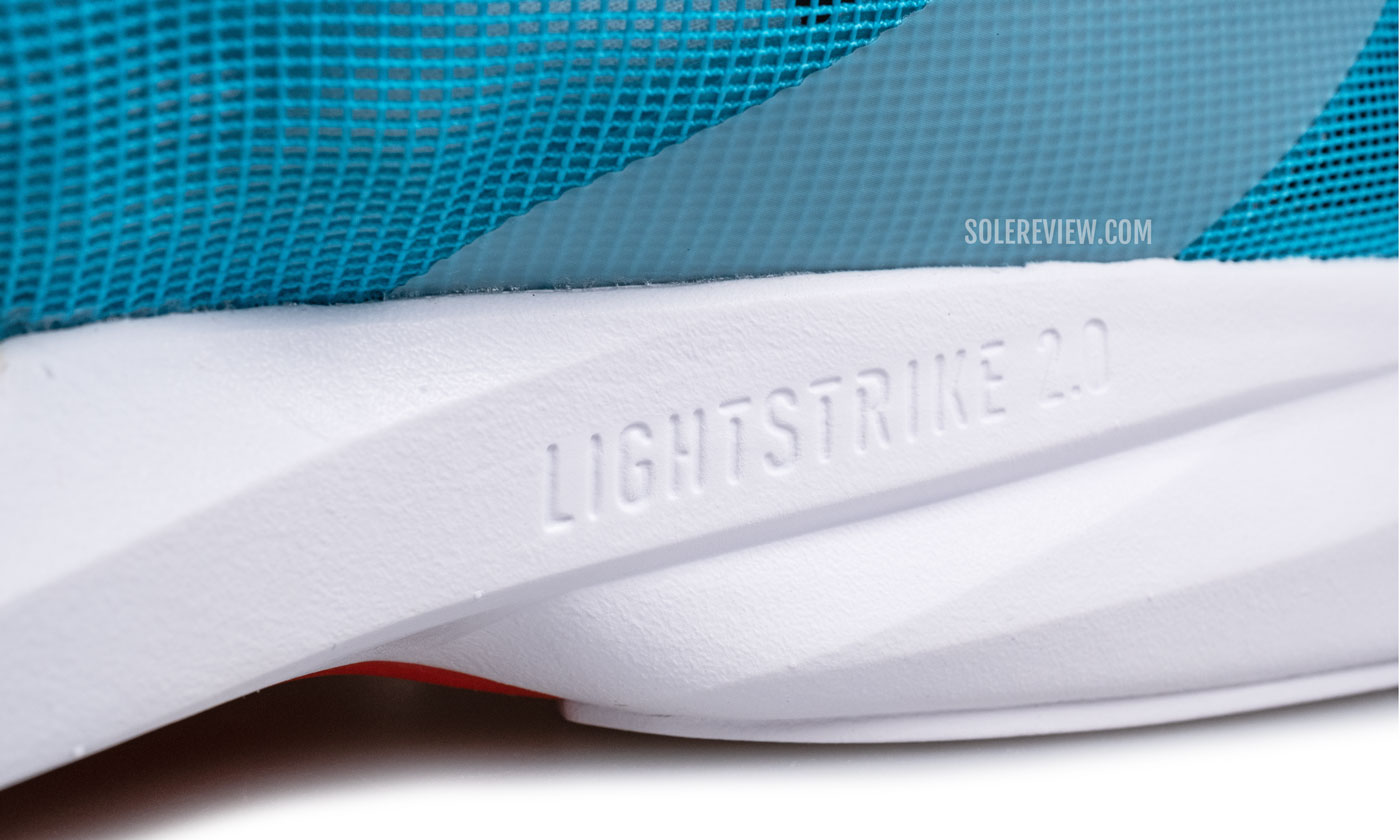
Lightstrike EVA foam. That’s what the heel has, and with comes a conventional cushioning experience.
However, the adios 8, like most products within the adizero collection, is friendly toward heel strikers. There’s plenty of Lightstrike EVA foam and rubber outsole to land on, whereas the deep transition channel keeps the weight centered.
Its durable build quality also helps the adios’s case as a daily trainer. The Continental rubber outsole is hardwearing, and so is the combination midsole. As long as the training runs do not exceed 10K, there’s sufficient comfort for everyday training.
A break-in period applies to the adios 8’s forefoot cushioning, but not to the extent of the Boston 12 with its tubular Energy rods.
RECOMMENDED ROTATION
The adios 8 is an excellent shoe for speedy training runs and races below 10K. However, it’s lacking in ride comfort for longer distances, so the Boston 12 can fill the role of a daily trainer. For marathons, the adios Pro 3 is a safe and reliable pick.
Outside of adidas, the Asics Novablast 4 makes a good daily trainer. If you’re looking for something (more) conventional, the Saucony Ride 17 is a comfortable daily beater. Plated marathon racers are aplenty, so you can’t go wrong with the Nike Vaporfly 3 or Saucony Endorphin Speed 3.
IS THE ADIDAS ADIOS 8 DURABLE?
With extensive outsole coverage and durable Lightstrike foam, the adios 8 will last around 450 miles before degrading in performance.
The upper seems well-cobbled together, and user feedback hasn’t been adverse so far.
THE UPPER DESIGN AND FIT
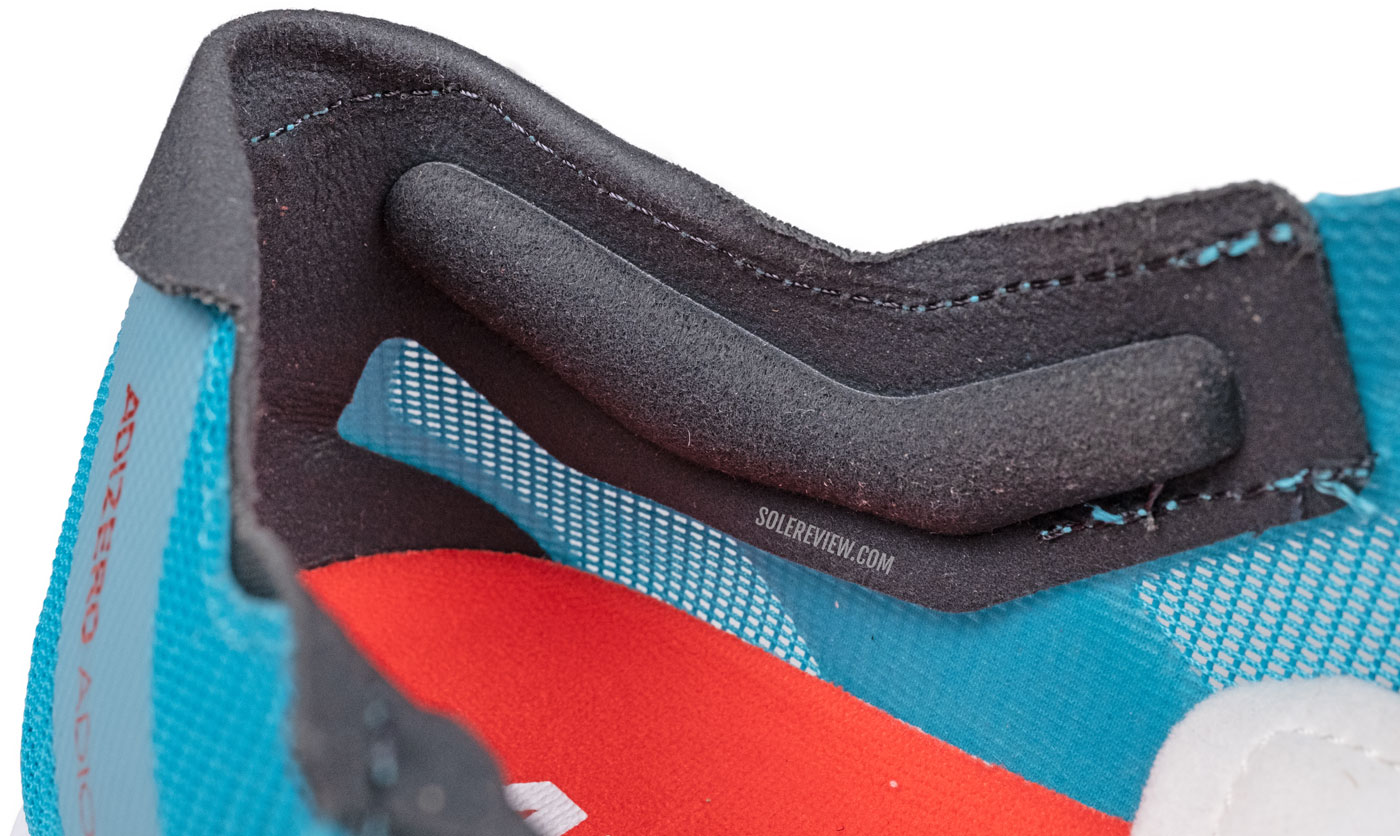
There are foam pods on the side, but nothing in between. The foot shifts a few mm into the heel, so an equal amount of space opens up front.
The adios 7 replaced the foam-padded collar with two side foam pods. That led to the foot sitting closer to the back, thus freeing up room in front of the toes. The adios 8 has a similar pod-like heel, but we still recommend going true-to-size.
Runners struggle to get the fit right on the adizero line-up more than other models, and we wager most of these problems would disappear once adidas gets rid of the pod-like heel collar. It seems that the loose fit was an unintended consequence rather than a deliberate choice.
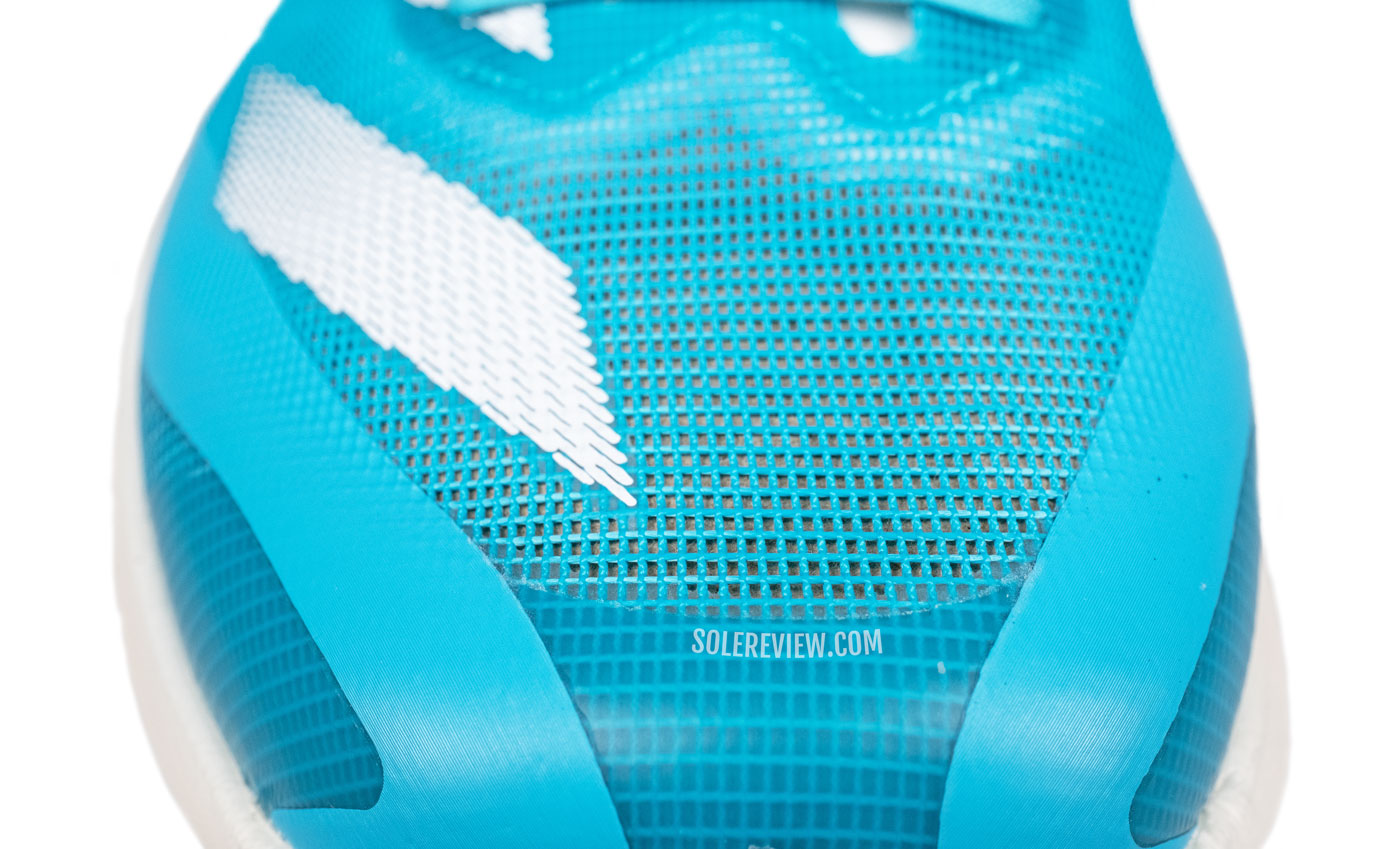
The toe-box is reinforced with a fused layer instead of a stitched kind. The toe box is broader as a result, and also prevents moisture absorbtion from splashes.
Though the forefoot fit isn’t sloppy, the toe-box is very spacious. The bumper is fused externally, and this gives the adios 8 a broad toe box with a high ceiling. The fused bumper is very useful when running on wet roads; the front of the upper doesn’t get damp from the splashes.
On a speed shoe like the adios, a snugger upper is preferable. On a standard ‘D’ width, the forefoot fit has more play than necessary. A tighter-fitting upper isolates the midsole cushioning during push-offs while improving the power transfer to the road.
A secure fit also improves cornering abilities and makes the shoe a better tool for the track. Sure, road shoes don’t find their way to a synthetic tartan track often. But when they do, the wearer will be thankful for a snug upper and grippy outsole.
The heel fit is good but not great. The pinky finger equivalent of space between the foam pods doesn’t hold the heel as well as it should. The heel does not slip out of the shoe, but there’s a noticeable difference between how the adios 6 and 8 fits over the heel.
The midfoot fit benefits from the sleeved tongue. The gussets are elastic, so they help the tongue fit flush over the foot. The tongue isn’t padded and is constructed using a soft mesh and lining. There are no hot spots or irritable bits.
There are ‘perforations’ on the tongue, but they don’t pass right through, as they are blocked by the lining. Other than that, the ventilation is excellent.
The porous mesh lets the pass freely, and the adios 8 is one of the few shoes with a breathable heel. The stiff counter inside doesn’t extend to the sides, and that leaves space for a mesh window.
Just like the adios 7 and Boston 12, the ‘cat ear’ heel pull tab is foldable and non-reflective.
ORTHOTIC COMPATIBILITY
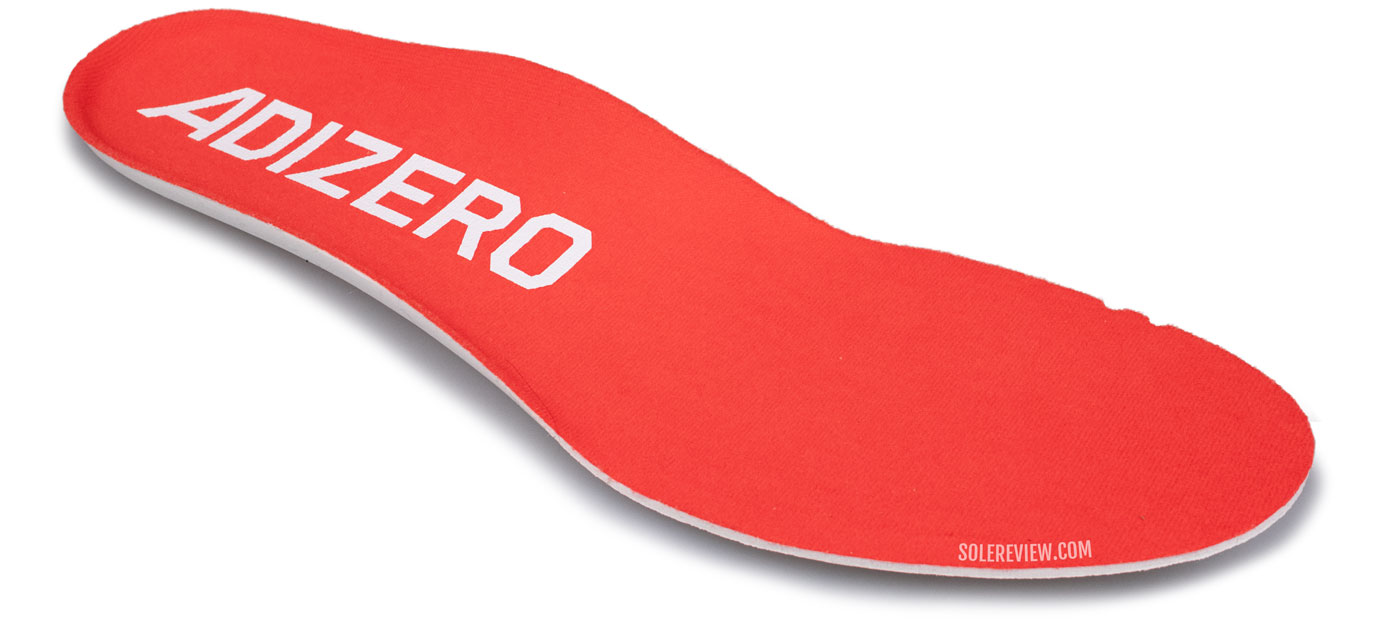
The adios 8 can be used with an orthotic, but the replacement should match the thickness, length, and width of the stock footbed.
The insole is removable, so the adios 8 can be used with a slim orthotic – provided the thickness and width match the dimensions of the stock insole.
PROS AND CONS
A conforming fit would have made the adios 8 a better racing shoe. Barring that, there are no other areas of concern. Optional widths would have been nice, but that’s an adidas-wide thing.
COMPARISON: THE ADIDAS ADIOS 8 VERSUS ADIDAS BOSTON 12
Like the adios 8, the Boston 12 has changed too. It’s more a daily trainer now than a speed shoe that the earlier versions (pre-Boston 10) were. The stack heights give it away; the Boston 12 has a 38 mm tall heel and a 31 mm high forefoot.
The high stack heights are countered with Energy rods – a full-length frame with tubed extensions under the forefoot. When properly broken in, these ‘rods’ assist the transition during push-offs. The Boston 12’s spacious upper has more room than the adios 8.
Those extras comes with more weight, as the Boston 12 is nearly 2 ounces heavier than the adios. As a rotation, both shoes mix well. Reserve the adios for shorter (and faster) runs, and keep the Boston for daily training and tempo efforts.
SHOES COMPARABLE TO THE ADIDAS ADIOS 8
We haven’t tested the Takumi-Sen 10 yet. But since it’s not a huge departure from the Takumi 9, it can be considered as a higher-tech alternative to the adios 8. Like the latter, the Takumi is designed for short races.
The Takumi Sen doesn’t have a firmer Lightstrike EVA frame, so you get the responsiveness of the LS Pro foam, but without the stability of the adios 8.
There are a few other racers with super-foam midsoles. There’s the Nike Streakfly, a shoe that we reviewed here. The New Balance SC Pacer is comparable with the Streakfly.
Finally, if you want a 5K racer that’s stripped down to the bare essentials, the Saucony Sinister should be on your radar. A step above would be the Puma Liberate Nitro 2, with its higher cushioning and superior durability.
Do you own this shoe? Improve this review by sharing your insights.

